

Bringing a Dog to Ireland from the USA, a Detailed Guide [by a local]
Disclosure: This article contains affiliate links and is a member of Amazon Services LLC Associates Program, meaning when you make a purchase, I earn a small commission. Affiliate links cost you nothing to use, and help keep my content free. It’s a win-win for us both! For more info, see the Privacy Policy
Have you been wondering about bringing a dog to Ireland from the USA?
Bringing a Dog from the United States to Ireland can be challenging. There are a lot of logistics to figure out from the paperwork to navigating the flight.
Thank goodness we have a helpful guide created by someone who has tons of experience making this journey. Jennifer has traveled often between Ireland and the US with her 5 pets including her dog Zoe.
Now she put what she has learned into a fantastic guide! She has a number of pro tips that you may not have thought of before. Keep reading to learn more about bringing a dog to Ireland from the USA.
We moved from Texas to Ireland and go back to the US to visit with our smallest (19 years young!) doggo, Zoe.
I thought I would write a post about our trips to Dublin for those that are interested in trans-Atlantic traveling with a pet in the cabin and have anxiety about the unknown like myself! I tried to put as much detail as possible.

Zoe the Irish-American Chihuahua
Zoe is a 19-year-old Chihuahua
Zoe moved from Austin, Texas to Ireland with her owner Jennifer Dundee Reeder.
Zoe was a regular pet traveler in the US and has continued to fly internationally.
Jennifer has spent many years working at a veterinary hospital, so she knows a lot about making sure pets are healthy and safe.
Can I fly my dog to Ireland with me?
Yes, you absolutely can fly your dog and cat to Ireland with you!
If you are bringing a pet to Ireland from the USA, you need to comply with certain requirements including proof of rabies vaccine connected to your pet’s microchip. Additionally for Ireland & UK (but not all EU countries), a required tapeworm treatment. If you are traveling to the EU for the first time or on holiday, you will also need a USDA-endorsed certificate from your vet to enter the EU.
How to Travel with My Dog to Ireland
Dogs and cats can both fly to Ireland from the United States. Depending on the size, the pet may fly in the cabin or under the plane.
If you have traveled to Ireland or anywhere else, share your story to help fellow pet travelers and stamp your Paws Passport .

Traveling between US and Ireland with a dog in cabin
Since Zoe is only 5lb/2kg she is quite tote-able and can travel with me in the cabin .
We fly Delta, we find them to be the most pet-friendly in-cabin airline. Zoe flew frequently with us domestically in the US before our move to Ireland.
Pet Reservations with Delta Airlines
You cannot add a pet to your flight reservation online with Delta, you must call customer service. You can book a ticket and then call, or just call reservations and book, adding your pet at that time
Pro Tip: Sometimes the reservations line wait times are shorter.
Pet airport check-in
You cannot check-in online or through the app when you have a pet, you must check in at the counter, so allow extra time.
We check in at the “special needs” line at Delta. The customer service counter person will check the Rabies vaccine and give you a bright green “Delta Authorized” tag for your bag .
They may not let you board without this tag, so make sure they give you a receipt, boarding pass or tag for your pet before you leave the desk!
Cost for flying with a pet on Delta Airlines in-cabin
The fee is $200 each way at the time I’m writing, payable at the time of check-in.

Delta Air Lines’ pet carrier requirements
The max dimensions for your pet’s travel bag are usually noted on your airline’s website. No one has ever measured Zoe’s bag, but for Delta, it is 18″x11″x11″ .
That size slides nicely under the seats.
No one on any of our trips has ever checked if Zoe can stand up or move around.
We smush her dog bed in there with her, so not really. She’s not super mobile anyway, so it’s never been a concern for us. We are more worried that she is warm and comfy when she snoozes.
If your dog isn’t crate trained or is struggling in the bag, they might have more to say about it.
Going through airport security with a pet
You do have to carry your pet through security outside of their bag, so if you have a darter or cat, make sure you have a harness already.
How do I prepare my dog for a 10-hour flight?
The path we take from the US to Ireland is Austin – JFK – Dublin. It’s a long journey, but we have developed a strategy that works for us.
Feeding and Potty Breaks
Zoe *refuses* to use the pet potty rooms at airports . I mean REFUSES. So we have come up with this system.
We keep her out of the kennel as much as possible prior to the flight.
What works for us is this:
✅ Feed her early (6-7am) ✅ Schedule our flight for late morning (10-12pm). ✅ We go ahead and feed her a full meal because she will poop right after she eats usually and then sleep. (Old dog things). ✅ We also take a small, collapsible bowl in case she demands water. Keeping them hydrated is important, but since bathroom breaks aren’t easy, use your best judgment. ✅ We try to get a 3-5 hour flight for our first leg, so Austin to JFK is great at close to 4. This seems short but with parking/check-in/security/take-off delays/de-planing, by the time we arrive, she’s been in her bag for a good 7-8 hours. ✅ We try to have a 3+ hour layover whenever possible. We first always still attempt to let her potty in the pet area. Still a no. So we go and find a semi-free corner in a gate area and build her a little playpen with our carry-ons. We put down a potty pad or 2, and water. She walks in circles for a few mins and then *potty time*.
On one flight she would NOT settle and my husband took her to the bathroom with a potty pad and she randomly needed to pee.
Bringing dogs on a plane
During the flight, she is mostly silent and sleeping. Most flight crew never even realize she’s on board.
Pro Tip: We have found taking snacks that crumble into her bed so she kind of has to root around for them helps keep her quiet in case she is jostled awake by bumps.
We have sneakily removed her from her bag and held her before and have about a 50% success rate with the flight crew that thinks she’s adorable and 50% that ask us to keep her in the bag. I don’t know that this would generally be allowed, but we got away with it. It helps that she’s very small and can hide under a strategically placed sweatshirt.
We have also done the trick (when I was a much more anxious flier) of giving the flight crew Starbucks gift cards or small treat bags with a little Thank You from Zoe. This generally bought us some goodwill in case she got fussy. But we are much more confident in her behavior now and haven’t done this in a while.
Is sedating my pet for a long-haul flight a good idea?
A lot of people ask about meds or sedation. Most airlines will require you to sign something stating your pet is not sedated.
Personally, having many many years of working in veterinary hospitals, I would agree. The health risks are not worth it. I am always anxious that someone will be bothered by Zoe whining or barking, but she rarely does and when it happens the white noise from the plane drowns her out AND 98% of people wear headphones on planes now anyway.
The most trying time is when they serve hot food. Zoe is NOT happy being in a bag locked away from all the food, so we usually pre-empt the rolling cart of chicken smells with a few treats.
The mental after-effects for your pet in being anxious but unable to move normally because of sedation like acepromazine can dangerously raise their heart rate and cause issues afterward.
That being said, Zoe already takes gabapentin and CBD for her arthritis and it usually chills her out for a while after she eats. So, use your best judgment and consult with your vet.
Pro Tip: Some people thoroughly exercise their pets before flights. I am not a huge fan of pre-flight cardio because it can dehydrate them or make them gulp water and then need to pee. The better idea is mental stimulation – lots of sniffing, gentle play, hide and seek, puzzle games, etc. This tires them out mentally, makes them more likely to snooze longer, and reduces anxiety.
Airport Layovers with our furry friends

We try to have a 3+ hour layover whenever possible. While this seems like a LONG time to spend at the delightful JFK, we have found it actually works in our favor.
✅ We go and find a semi-free corner in a gate area and build her a little enclosure with our bags. ✅ Zoe will eat, poop, and walk in circles for a few more minutes, then be ready for bed. ✅ Then we pack up and find some food for ourselves. ✅ If we have extra time before our flight, we camp at our gate and let her walk around in her playpen again. We try to keep her walking and awake as long as possible before we board for Ireland. ✅ She is very shaky when walking at this point so a leash is not a great option for her. If your dog is larger or more mobile you may not need these extra steps, they can just walk with you. But we had to improvise for our special needs girl! We try to find out-of-the-way spots for us to camp in, but no one has ever bothered us before.
Is it safe to fly dogs in cargo?
When we moved from Austin to Dublin, I hired a pet relocation company based out of Austin, Pets With Passports , to help coordinate our 5 animals. The relocation company was wonderful by the way. My 5 pets all flew cargo at the same time together .
What do I need to take my dog to Ireland from the USA?
The USDA APHIS states you will need proof of Rabies vaccine, microchip and additionally for Ireland & UK (but not all EU countries)- a required tapeworm treatment. This must be administered at the vet, no more than 5 days prior to landing at your final destination.
Rabies Vaccine
A receipt for the Rabies vaccine from your vet is not enough, you will need an endorsed certificate that have your pet’s microchip listed.
Many say they need to be signed in blue ink, not black … but I have never been stopped or had a cert questioned with a black ink.
Many vets have computer-generated signatures on these forms now, and customs seem to accept this. If you are concerned, make sure to note to your vet beforehand so they can print and sign additional certs for you without the computer signature. I would request 2 copies. (Never hurts to have an extra on hand!)
It is important for the rabies vaccine to be recorded with the microchip number, so you will want to get the microchip before the vaccine.
Tapeworm treatment
The UK and Ireland have an additional requirement of a tapeworm treatment that is not required by most of the EU countries
This must be administered at the vet no more than 5 days prior to landing at your final destination.
Pro Tip: I worked at a vet for years and my preferred time frame is 2 days prior to flying . This is because even if your pet has no worms, the meds can cause tummy upset the next day or so after administering and flying with vomiting and/or diarrhea-having dog is no one’s idea of a good time. But doing it at 4 or 5 days runs the risk of concern with a canceled or reschedule flight bumping you out of your 5-day window. So 2-3 days out is my preference!
If you are an EU resident (like I am), the vet just records the date and time administered in her pet passport.
As an American traveling, I would pre-type out a letter stating
“I have administered __ med at __ dose to pet known as __, microchip # __ traveling with __, on _date_ at _time_.”
Have the vet write and sign the letter. Get them to put a stamp from their clinic (they all should have one) with their contact info phone/address etc. Keep this signed letter with the receipt from the tapeworm visit.
Again, the medication must be administered by a vet at the office, don’t let them send you home with it, and the receipt alone may not be enough.
Health certificate – USDA endorsed
Bringing a dog to Ireland from the USA : If you are traveling to the EU for the first time or on holiday, you will also need a USDA-endorsed certificate from your vet to enter the EU.
There is a high cost associated with it usually, but be kind to your vet! It is a laborious process and they are liable if even the smallest detail is wrong.
You will need to travel with 2 copies, as sometimes customs likes to take the original.
The USDA certificate must be signed by YOUR vet and a second USDA vet .
The exam for the health certificate by your vet can be done up to 30 days prior to travel .
The USDA must endorse it within only 10 days . This is the most stressful part, truthfully.
The USDA prioritizes based on flight dates, so sometimes you will only receive it 1 or 2 days prior to flying. *stress*. You can call and check with them if you are freaking out. But remember if your departure point to the airport is not your house, the certificate/FedEx has to track you down – so keep that in mind when traveling!
Pro Tip: A great thing to do is ask your vet if they do many travel certificates. Vets that have experience with this timing tend to have the process down a bit more efficiently than vets who rarely do them. Vets physically nearer to international airports are generally better at these! Not just any vet can sign, they must have a special certification- so check that as well!
What Happens Once We Arrive at the Dublin Airport With My Pet?
“advanced notice” to the irish airport authorities.
Prior to your arrival in Dublin, you must contact the Port Authority and schedule a compliance check.
They are open 7 days a week 9 am to 7pm. If you land outside those hours, it’s a bit more complicated so I would advise trying to find a flight that complies.
You just email them at [email protected] and they will send you a link to a simple form to fill out with your pet and flight info, scan and send back.
You should try to give them 7-14 days notice. If your flight changes, make sure to update them ASAP. They have your flight#, so will know if it’s cancelled, but still email them and let them know your new schedule.
Local Tip: I will say for Dublin in particular, the national slogan is “It’ll be grand.” Everyone is very easy going and I’ve yet to meet anyone who is out to find errors or reasons to tell you NO. This country loves to be chill and helpful, so don’t be stressy when traveling here! I print out and keep a copy of the confirmation email for the Compliance appointment you receive after submitting your form. Sometimes the airline reps will ask to see it.
Immigration and Customs for pets at the Dublin Airport

Dublin Airport actually has American customs in Ireland, which is unusual (unique?).
The customs agents have never looked at or asked for her paperwork before. They usually just want to give her a pet. So we usually breeze right through. Also, we have Global Entry so this might help. But because it is within their purview to do so, make sure to have the paperwork available.
When you arrive in Dublin, you first go through border control where they check your passport/visa etc. I’ve never been asked about her there before or they’ve never noticed her.
Then proceed to baggage claim. Right by baggage claim there is a sign for the Agriculture department . Usually, the door is open and they are waiting. If not, there is a phone there, just pick it up and it’ll ring the duty supervisor.
While my husband fetches the bags, I check Zoe in.
They scan her chip and check her passport and tapeworm dates. Usually, they make a copy of her docs and then charge you €50. They don’t take American Express.
If your pet has flown cargo , this is the same area they will be delivered to from the plane.
Mostly the process takes a good 10 minutes if everything is in order. If you leave the airport without the Compliance check, you are in trouble – so don’t forget!!
Absolutely, Ireland is generally considered a dog-friendly country. Many Irish people love dogs and there is a significant culture of dog ownership in the country. The cities, towns, and countryside are replete with parks and walking paths, which make for great dog walking areas. Moreover, many pubs and restaurants, especially those in more rural and tourist-heavy areas, allow dogs, particularly in their outdoor seating areas. In terms of public transportation, dogs are permitted on trains in Ireland, provided they are in a carrier or on a leash. However, rules may vary for buses and trams, with some only allowing small dogs in carriers, while others may not allow dogs at all, except for guide dogs. You can read more about people’s experiences with their pets in Ireland
You can visit a vet in Ireland and get your pet a passport to travel onto the UK or EU if you like, but do not need one to return to the US. To get from Europe to the US with a pet, it is quite simple. You just need a copy of your pet’s current rabies vaccine with microchip notation. Do not purchase a pet passport online from the US. Those are not valid for entry into Ireland nor for returning to the US. You can only get an EU Pet Passport in the EU and the entries need to be completed by a vet licensed in the EU.
You can not take your dog from anywhere outside the EU into Ireland without the official government paperwork. This includes rabies vaccine, health certificate, and tapeworm treatment. However, in the US, this document is not called a “pet passport”. If you are traveling within the EU, an official EU Pet Passport is useful.
Yes, dogs are allowed at Dublin Airport, but they must be kept in a secure, airline-approved carrier at all times, unless they’re assistance dogs. For travel, dogs must typically go in the cargo hold, except for small dogs on some airlines and certified assistance dogs. It’s crucial to check with your airline for their specific pet policies before arriving at the airport. Note that for international travel, pets must meet country-specific regulations, which often include official documentation.
Every airline sets its own prices for the cost of flying a pet. If the animal goes in the cabin, expect to pay between $100-$250. If the pet is flying cargo, there are so many variables including the pet’s weight, the airline, and whether a shipping company is used. Charges will easily be over $500 per pet and possibly into the thousands.
In April 2023, Stena Lines Ferry announced they will be providing some pet-friendly cabins on Irish routes.
Final Thoughts: Bringing a Dog to Ireland from the USA
Thanks so much to Jennifer Dundee Reeder for sharing the ins and outs of bringing a dog to Ireland from the USA. Sure, it might seem a tad bit overwhelming at first, but trust me, it’s not as scary as it sounds. Just remember your to-dos: get the right vaccines, don’t forget that tapeworm treatment, and get those necessary documents in order. Oh, and let’s not forget – keep your fur baby comfortable during that long flight. After all, a snoozing pooch equals peaceful travel, right?
Once you’ve got all that sorted, you’re all set for a grand Irish adventure with your best fur friend. So, grab your pooch, pack those bags, and get ready for the Emerald Isle.
Trust me, it’s going to be a blast! And remember, when in doubt, just think “It’ll be grand” – because, really, it will be.
Resource Guide for Travel with a Dog
🧳 What’s the best carrier for my dog when traveling?
You need different carriers for different types of travel
This is my favorite carrier for a small dog – Sleepypod Air
This is my favorite car harness for medium-large dogs – Sleepypod Clickit
This is the best for a large dog on a plane – Skymate Kennel
This is my favorite backpack for a small-medium sized dog – Mr. Penuts Tahoe
You can read more about my r eview of types of dog carriers for travel here .
🏨 What’s the best site to find cheap pet-friendly hotels?
To find cheap hotels, I recommend Expedia
Vacation Rentals are often the best option for people with pets VRBO
Stay for free or have someone watch your pet with Trusted Housesitters!
—–We love traveling and we love our dogs
It’s not always easy to combine the two especially when that means getting on flights or crossing borders. We brought our first dog from Kenya to California, and a few years later she went with us to Ecuador before returning to California where we settled down for a while. Now we are gearing up for a new adventure as we look to bring Sam and Denver on our next global journey. This site is a gift of love to my dogs and to others who love their pets so much, they can’t imagine leaving them behind
Similar Posts

Dog friendly Midcoast Maine: The Local Scoop on Bath, Georgetown and More
Is Midcoast Maine a good place to visit with my dog? Midcoast Maine—where the air is crisp, the views are breathtaking, and you can find lots of happy dogs. If…

Dog Friendly Carmel: How to Enjoy Carmel-by-the-sea With a Dog
Have you been wondering about visiting dog friendly Carmel? I’ve got you covered! Carmel-by-the-sea is a quaint coastal enclave on California’s Monterey Peninsula. This is one of our favorite places…

11 Best Dog Friendly Hotels in San Francisco: Near Top Districts and Attractions
Have you been wondering what are San Francisco’s most dog-friendly hotels? I’ve got you covered! For over 20 years, we’ve been bringing our dogs to the iconic city of San…

19 Best Dog Friendly Beaches in Maine
Have you been wondering which dog-friendly beaches in Maine will work best for you and your pup? I’ve got you covered! We recently spent a month in Maine during our…

Dog-friendly Washington DC: Great Pet-friendly Things to Do at the Capitol
The Washington DC region ranks as one of the most dog-friendly cities in the US. If you are visiting, it is a fantastic place for both you and your dog….

Carmel’s Dog friendly Hotels: The Top 11 Places to Stay
Have you been wondering what are Carmel’s most dog-friendly hotels? I’ve got you covered! The Monterey Peninsula, and more specifically Carmel, has become a favored destination for our family, including…
Are you sure you want to leave the feed?
Oops... something went wrong!
Looking for inspiration? Planning a trip? Or just want to scroll yourself happy? We'll show you an Ireland that's tailor-made for you.
- #Landscapes
- #CultureandHeritage
- #OutdoorActivities

Oops... no internet connection
While offline, you can still add items to My board. New travel reccomendations will only show up once you’re back online.
See what Ireland has in store for you
Items without a physical location are not shown in map view.
Looks like your board is empty
Look out for the little heart icon around Ireland.com. Simply tap the heart to add items to your board!

Board settings
Collection cover image.
Visible to people you share your board with

Share board
Share a link to your My Ireland board and inspire friends, fellow travellers and family. Only you can add or remove items from your board.

Sign in Sign up Forgot your password?
Create an account.
Access My Ireland across all your devices by logging in.
Sign up Not got an account?
Terms of use | Privacy policy
Login Got an account?
Location access
- View offers and deals nearby
- Find travel inspiration based on your location
- Get local weather forecasts and essential information
Enable location access
Location access on ios.
- 1 Open the website settings for this website in your browser.
- 2 Select Location settings.
- 3 Choose Allow.
- 1 Open the My Ireland website.

- 2 Select the icon below.

- 3 Select Website Settings.

- 4 Change Location status to Allow.

Notifications
Travel times.
Tell us when you are travelling to Ireland and we'll show you tailored reccomendations during of your trip.

- Recommended events during your stay
- Helpful travel reminders and updates
You have unsaved changes. Save before leaving?
We take your privacy very seriously and only ever process your data with your permission. If possible this is handled anonymously and we will never store your data for longer than is required. For more information on how we handle your personal data, please read our privacy policy.
Remove data
To securely remove all data associated with your profile, please contact our Data Protection Officer.
Reset your board
This will remove all the items you have previously liked from your board. Please note, you can’t undo this action.
Are you sure you want to reset your board?
- Created date 19 July 2023
Delete account
Sorry you’re leaving. Just a reminder – if you delete your account, you won’t be able to post in Community. And it’s permanent so you can’t undo it in the future.
Delete your account
- No. Keep my account
- Yes. Delete my account

Bringing your pet to Ireland
The importation of pets into Ireland is strictly controlled to ensure diseases such as rabies are kept off of the island

Ireland in your inbox
Sign up to receive free email newsletters from Tourism Ireland, including regular tailored updates on holiday ideas and insider tips.
We will use your email address to send you personalised content straight to your inbox based on how you interact with this website and our advertisements on other websites.
Something went wrong...
Success! Thank you for subscribing to our Newsletter!
I understand that by signing up, I will receive personalised email content based on my use of Tourism Ireland’s website, emails and Tourism Ireland’s advertising on other websites, cookies and tracking pixels. You can unsubscribe at any time by clicking 'unsubscribe' in our emails. Find out more information on "How we handle your personal data" in our privacy policy .
Bringing your pet on holiday with you is fun – they’re part of the family after all. Selected hotels, guest houses and B&Bs happily accommodate pets: the five-star Cliff House Hotel in County Waterford even offers a luxury package specially designed for your pooch. B&B Ireland has lots of members who accept pets into their homes and many self-catering properties are now pet-friendly.
For the enthusiastic dog owner, the possibilities for walks are endless on the island – although remember to keep your dog on a leash at all times as sheep can pop up out of the most unlikely places! During the summer months, country fairs and festivals hold all sorts of dog shows, cat shows and pet races; so if you’re particularly proud of your pooch why not see if they can bring home the gold?

Murlough Bay
County Antrim
For the enthusiastic dog owner, the possibilities for walks are endless on the island
Bringing pets into the Republic of Ireland
Entry requirements depend on where your pet is travelling from .
Travelling from the EU
If you are bringing your pet dog, cat or ferret into the Republic of Ireland from another EU country or from Andorra; Gibraltar; Greenland and the Faroe Islands; Iceland; Liechtenstein; Monaco, Norway; San Marino; Switzerland or the Vatican City State, your pet must:
• Be microchipped (this must be done before anything else)
• Have a valid rabies vaccination
• Have an EU Pet Passport or Health Certificate
• Be treated for tapeworm (dogs only) before each visit, unless you’re travelling from Northern Ireland, Finland, Malta or Norway)
Travelling from Great Britain
If you are bringing your pet dog, cat or ferret into the Republic of Ireland from Great Britain, your pet must:
• Have an Animal Health Certificate
• Be treated for tapeworm (dogs only)
Allow plenty of time to arrange the relevant vaccinations and requirements with your vet before you travel – and don’t forget your pet will need a new AHC and tapeworm treatment for each trip. Find out more at Gov.uk: Taking your pet abroad and Gov.ie: Pet Travel Portal .

Dogwalking at Portumna Castle, County Galway
Travelling from outside the EU and Great Britain
Entry requirements depend on your country of origin. You can find details of the requirements for each country on the Irish Government's Pet Travel Portal .
At a minimum, your pet must:
- Be microchipped (this must be done before anything else)
- Have a valid rabies vaccination
- Have an EU Health Certificate
- Be treated for tapeworm (dogs only) before each visit
- Enter the Republic of Ireland only through Cork Airport, Dublin Airport, Dublin Port, Shannon Airport, the Port of Cork at Ringaskiddy or Rosslare Europort and must undergo compliance checks on arrival.
Pets coming from certain countries may also need to have a blood test after the rabies vaccination at least three months before entry.
Advance notice: If you're entering Ireland from a non-EU country you must arrange in advance to have a compliance check carried out on your arrival. You can find contact details to make these arrangements on the Pet Travel Portal .

Castlewellan Forest Park, County Down
Bringing pets into Northern Ireland
Dogs, cats and ferrets from certain countries or territories can enter Northern Ireland without quarantine provided they meet certain criteria.
Northern Ireland is part of the EU Pet Travel Scheme so you can use a pet passport issued in an EU country, including the Republic of Ireland, to bring your pet into Northern Ireland. Your pet will need to:
- Have an EU Pet Passport or Health Certificate
- Be treated for tapeworm (dogs only) before every visit
Great Britain is outside the EU Pet Travel Scheme so there are different rules around bringing your pet to Northern Ireland from Great Britain. Before you travel, you should check the Northern Ireland Government website or Gov.uk: Taking your pet abroad to make sure you adhere to the latest requirements.
Entry requirements depend on your country of origin. You can find details of the requirements for each country on the Northern Ireland Government's website .
- Have an EU Health Certificate confirming microchip and vaccinations
- Enter Northern Ireland only through Belfast Port, Belfast International Airport, Belfast City Airport, City of Derry Airport or Larne Port and may be required to undergo compliance checks on arrival.
Travelling within the island of Ireland
Pets travelling from the Republic of Ireland to Northern Ireland or vice versa should be microchipped, vaccinated against rabies and meet any additional requirements. They must also be accompanied by either a valid Animal Health Certificate (Great Britain residents) or an EU pet passport.
Getting here: transport and your pet
It's up to each individual airline to decide whether to carry your pet in the cabin or as excess baggage and each ferry operator has differing rules on travelling with animals. Always check with your transport company before you travel to confirm their requirements for transporting your pet.
New Locations Now Open

- Dr Gemma Nash
Taking a dog to Ireland in 2024: Everything you need to know

Taking a dog to Ireland is trickier than it was before Brexit, with extra paperwork required depending on which part of Ireland you are travelling to. In this guide we run through what you need to do in order to take a dog to the Republic of Ireland, Northern Ireland as well as travelling between the two, including when an Animal Health Certificate is required, when to get tapeworm treatment administered, and how to return to the UK.
Please note, this guide only covers owners travelling with their dog from Great Britain (England, Scotland or Wales) to the Republic of Ireland or Northern Ireland . If you're travelling to Ireland from another country, if you aren't travelling with your dog, or if a dog is moving for commercial purposes, then other requirements may apply.
This guide is frequently updated by our vets to ensure the advice we give is up to date. If you think that something is incorrect or out of date please do contact us so we can update our guide.
Dog Friendly Travel Routes to Ireland
Taking a dog from great britain to the republic of ireland, taking a dog from great britain to northern ireland, taking a dog from northern ireland to the republic of ireland, taking a dog from the republic of ireland to northern ireland.
There are a number of routes to take your dog to Ireland from Great Britain.
Due to the complexity and cost of taking a dog by plane, most people tend to travel by ferry from one of the ports along the west coast of Great Britain. Crossing times range from 2 hours to 8 hours, and generally ferry companies don't charge extra for taking dogs.
We've listed the most common routes that accept dogs from Great Britain to Ireland below:
All of these ferry companies are dog friendly, with most routes having the option of either booking a kennel, a dog friendly cabin, or keeping them inside the car.
For more information on each ferry companies' individual pet policies please follow the links below:
StenaLine pet policy
Irish Ferries pet policy
P&O Ferries pet policy
If you are planning on flying with your dog to Ireland, you'll need to book with a pet friendly airline such as KLM, Lufthansa, or Aer Lingus. You'll need to check with the airline what their pet policy is, and whether your pet can travel in the cabin or whether they have to be in the hold. Typically in addition to the requirements detailed later on in this guide, the airline will often require a "Fitness to Fly" certificate issued by a veterinarian stating that the dog is fit to travel.
The Republic of Ireland is part of the European Union so in order to take a dog there EU rules must be followed. Below we outline what these requirements are and in what order they need to be followed.
1. Ensure your dog is microchipped and has been vaccinated against rabies
The first step is to ensure your dog has been microchipped (a legal requirement in the UK), and if your dog hasn't had a rabies vaccination before (or the previous one has expired), then you'll need to book this in at your vet practice.
Rabies vaccinations are not routine vaccinations in the UK, so unless your dog has travelled abroad before, it is unlikely that they will have had one. Dogs need to be at least 12 weeks old before they are able to have a rabies vaccination.
The price of rabies vaccinations varies by vet practice but most tend to charge between £50 and £90.
The vaccination needs to be administered at least 21 days before an Animal Health Certificate can be issued (see step 3), so you'll need to factor this in when planning your trip.
When the vet administers the rabies vaccination, they should update your dog's vaccination/health card or issue you with a rabies vaccination certificate. See our guide on proof of rabies documentation for what type of document is required.
The vaccination card or certificate needs to have the following information on in order for a vet to issue an Animal Health Certificate (AHC):
Details of your dog including the microchip number
Date the rabies vaccination was administered
Manufacturer and batch number of the rabies vaccination
Name, signature and practice stamp of the vet surgeon who administered the vaccine
2. Plan your travel to the Republic of Ireland, ensuring you can book an appointment with an Official Veterinarian a few days before your departure date
Dogs may only enter the Republic of Ireland through a designated Traveller's Point of Entry (TPE) . These are:
Cork Airport
Dublin Airport
Dublin Port
Port of Cork – Ringaskiddy
Rosslare Port
Shannon Airport
Most people travelling with a dog to the Republic of Ireland travel by ferry, either from Holyhead, Fishguard or Pembroke into Dublin or Rosslare.
Check with the ferry company what their policy on dogs is, and whether to book them into a kennel or dog cabin onboard, or to leave them in the car during the crossing.
Before you book your ferry, it's worth booking the Animal Health Certificate and tapeworm treatment appointment(s) in with us or another Official Veterinarian to ensure they fit within the time below scales:
The Animal Health Certificate must be issued at least 21 days after the rabies vaccination was administered AND within 10 days of your departure date.
The tapeworm treatment must be administered between 24 hours (1 day) and 120 hours (5 days) before your scheduled arrival time in the Republic of Ireland.
3. Get an Animal Health Certificate issued within 10 days of your travel date
All dogs travelling to the Republic of Ireland are required to have either an Animal Health Certificate (AHC) or an EU-issued pet passport with a valid rabies vaccination in. GB-issued pet passports are no longer valid for travelling to the EU, and have been replaced with AHCs.
Animal Health Certificate
An Animal Health Certificate (AHC) is a single-use document required for dogs or cats to enter the EU from the UK. The certificate must be completed and issued by an Official Veterinarian within 10 days of your travel date, and at least 21 days after the rabies vaccination was administered (to allow sufficient immunity to build up).
Not all vet practices have Official Veterinarians (vets than can issue AHCs), and prices can vary widely, so it's best to shop around to see which vet can issue your AHC within the time period you need it, and at a fair price.
At PassPets , we've issued thousands of AHCs for pet owners around the country, and with prices starting from £99, we're highly likely to be a lower cost option than your vets. To find out more about our service, visit our homepage, or call us to speak to one of our veterinary team. We have three clinics around the UK (Havant, London and Bristol) , and if you're not local all three locations are easily accessible if you would like to collect your AHC en-route to your ferry or tunnel crossing.

EU Pet Passport
If you have an EU-issued pet passport (not a GB-issued pet passport), and the most rabies vaccination was administered and completed in the EU pet passport by a vet registered in the EU and it is still in date for the duration of your trip , then you can use this EU pet passport instead of an Animal Health Certificate.
4. Tapeworm Treatment
All dogs entering the Republic of Ireland are required to have tapeworm treatment administered and recorded by a vet between 24 hours (1 day) and 120 hours (5 days) before the dog's scheduled arrival time in the Republic of Ireland.
The vet that administers the tapeworm treatment does not have to be an "Official Veterinarian", any vet can administer and record tapeworm treatment.
To avoid having to make multiple appointments with the vet, it's worth seeing whether they can issue the AHC and administer the tapeworm treatment at the same time (i.e. between 24 hours and 120 hours before you arrive in the Republic of Ireland). At PassPets , we issue the AHC and administer the tapeworm treatment at the same appointment.
The treatment needs to be recorded in the table at the bottom of page 3 of the Animal Health Certificate. The vet will need to record the name and manufacturer of the product, the date and time it was administered and their name, stamp and signature.

If you have an EU pet passport, then tapeworm treatment is still required, but it will need to be recorded on the "Echinococcus Treatment" page in the EU pet passport instead.
5. Travel to the Republic of Ireland
Once you have an Animal Health Certificate (or EU pet passport), and tapeworm treatment has been administered, you can travel to the Republic of Ireland with your dog (provided you are due to arrive in the Republic of Ireland between 1 and 5 days from when the tapeworm treatment was administered).
At the ferry port, or airport, they will check your dog's microchip and inspect the paperwork you have to ensure it has been filled in correctly and that the tapeworm treatment has been administered.
6. Travelling back to Great Britain from the Republic of Ireland
Provided you have not travelled to any other countries whilst in the Republic of Ireland (apart from Northern Ireland), there are no extra requirements for returning to Great Britain.
At the border they will check to see you have an Animal Health Certificate (or EU pet passport), for your dog and that the rabies vaccination is still valid.

Taking a dog from Great Britain to Northern Ireland is easier than taking a dog to the Republic of Ireland.
Most people travelling with dogs tend to travel by ferry, either from Cairnryan (in Scotland) to Belfast or Larne, or from Liverpool to Belfast. Check with the ferry company what their policy on dogs is, and whether to book them into a kennel or dog cabin onboard, or to leave them in the car during the crossing.
When the UK left the EU in January 2021, in order to take a dog to Northern Ireland, pet owners initially had to follow the same rules as for the Republic of Ireland, including a rabies vaccination, an Animal Health Certificate and tapeworm treatment.
However, on the 15th September 2021, a statement was issued from DAERA (the Department of Agriculture and Rural Development of Northern Ireland) announcing that all pet checks on the border between Great Britain and Northern Ireland would be suspended until further notice.
"There will be no routine physical or documentary checks on the non-commercial movement of pet dogs, cats and ferrets travelling from Great Britain to Northern Ireland until further notice" Department of Agriculture and Rural Development of Northern Ireland ( Source )
So given the above statement, as long as you are only travelling to Northern Ireland and not to the Republic of Ireland, then there are no requirements for taking a dog other than the dog must be microchipped.
That said, we would still recommend contacting the ferry company (or airline) you are planning on using to see whether they have still suspended pet checks at the time you will be travelling.
When returning from Northern Ireland to Great Britain with a dog, there are no additional requirements:
"If travelling from NI to GB with your pet and not returning to NI, there are no documentary or health preparation requirements. However, there is a legal requirement that dogs are microchipped at 8 weeks old." Department of Agriculture and Rural Development of Northern Ireland ( Source )
Technically, because you are entering the EU when travelling from Northern Ireland to the Republic of Ireland, you need to follow the EU rules when taking a dog, which includes getting an Animal Health Certificate issued and tapeworm treatment administered (as outlined above in the travelling to the Republic of Ireland from Great Britain section).
If you entered Ireland through Northern Ireland but are planning on returning to Great Britain from the Republic of Ireland then we would definitely recommend following the steps above for travelling to the Republic of Ireland. This is because they will likely be checking documents at the border between the Republic of Ireland and Great Britain so they will want to see a valid Animal Health Certificate or EU pet passport.
On the other hand, if you are not planning on returning to Great Britain via the Republic of Ireland, then because there is no physical border between Northern and the Republic of Ireland, you are unlikely to be checked for pet documentation:
"A risk-based approach is taken with regards to the level of compliance checks on pets travelling between NI and the ROI. DAERA and the Department of Agriculture Food & Marine (DAFM) reserve the right to carry out checks should there be a suspicion of illegal activity or welfare concerns." Department of Agriculture and Rural Development of Northern Ireland ( Source )
However an Animal Health Certificate or EU pet passport with evidence of the tapeworm treatment, is technically required.
If you've travelled into the Republic of Ireland from Great Britain with a dog, you'll have had to get an Animal Health Certificate or EU pet passport, along with evidence of tapeworm treatment before you arrived.
As a result, if you were to travel into Northern Ireland, because there are no routine checks being done between the Republic of Ireland and Northern Ireland, nor between Northern Ireland and Great Britain, you are unlikely to need to show these documents, but it's worth keeping hold of them just in case.
We hope our guide helps when planning your trip to Ireland with your dog. For more guidance please visit the government website for taking pets to the EU , or contact us .
Recent Posts
Animal Health Certificates: Everything you need to know in 2024
Taking a dog to Spain and back in 2024: Everything you need to know
Taking a dog to France and back in 2024: Everything you need to know
Welcome Back
Don't have an account yet? Register
Are you a business owner? Register here
Already have an account? Log in
10 airlines that allow pets in cabin to Ireland
Updated On: August 31, 2023 | Published On: August 28, 2023
Where Are The Points of Entry?
- Cork Airport
- Dublin Airport
- Dublin Port
- Port of Cork – Ringaskiddy
- Rosslare Port
- Shannon Airport
What Pet Travel Documents Are Required?
Which airlines allow pets on flights to/from ireland.
- Due to changes in the baggage system at Dublin Airport, pets are no longer permitted in the hold on flights from Dublin. However, they are allowed to travel as cargo.
- Due to restrictions set by the UK, pets are not permitted in the cabin on flights to London, or in the hold on flights to/from London. This includes flights between Ireland and the UK. They may, however, be permitted to be transported as cargo but you will have to book that with a specialized freight agent.
- In addition to any rules and regulations specific to each carrier, traveling with a pet from outside the EU to Ireland will require that you satisfy all of the conditions laid out by the European Commission.
Delta Air Lines
Tap air portugal.
- Pets per passenger - 1
- Pets allowed - dogs and cats
- Maximum weight - 8kg including carrier
- Maximum carrier dimensions - 46 x 28 x 24 cm
- Additional Fee - €70 for domestic flights, to €125 for flights in Europe up to €200 for long-haul
- Additional information - Your pet must be at least 15 weeks old
- Pets per passenger - 2
- Pets allowed - dogs, cats, and household birds
- Maximum weight - No weight restriction.
- Maximum carrier dimensions - Depends on the aircraft
- Additional Fee - €200 (or USD, if your flight originates from the United States) for international flights
- Additional information - Pets must be at least 15 weeks old when traveling to the European Union.
- Pets per passenger - 2
- Pets allowed - dogs, cats, fish, tortoises, and birds (except birds of prey)
- Maximum carrier dimensions - 45 cm x 35 cm x 25 cm
- Additional Fee - €60 for flights within Europe, and €180 for flights to America and Asia
- Additional information - Animals are not permitted in the hold (AVIH) on flights from Dublin . However, they are permitted to travel as cargo. 2 pets of the same species are allowed in one carrier.
- the flight originates from Dublin Airport.
- The flight is on a Boeing 787-9 or Boeing 787-10.
- The flight has a transfer time of over 3 hours.
- Maximum weight - 8kg including carrier
- Maximum carrier dimensions - 46 x 28 x 24 cm
- Additional Fee - from €75 to €400 each way
- Additional information - Pets are welcome in the cabin when traveling in Economy Class, or Business Class within Europe
- Maximum carrier dimensions - 55 x 40 x 23 cm
- Additional Fee - €60 for flights within Europe, and up to €110 for long-haul flights
- Maximum carrier dimensions - 43 x 31 x 20 cm
- Additional Fee - from €55-€75 if paid online or €60-85 at the airport
- Additional information - Only 2 pets per flight, however, up to three very small puppies or kittens in the same container may be booked as one animal. You must check in at least one hour before departure when traveling with a pet.
- Maximum carrier dimensions - 45x30x23cm
- Additional Fee - Between €40 - €160 depending on flight
- Additional information - No mixed breeds and must be at least 12 weeks old
- Maximum carrier dimensions - 40 x 30 x 24 cm
- Additional Fee - €50
- Additional information - pets must be at least 15 weeks old
- Pets allowed - dogs, cats, birds (excluding birds of prey) and tortoises
- Maximum carrier dimensions - 45 x 39 x 21 cm
- Additional Fee - €50 for domestic flights and €60 for international flights
- Additional information - pets must be at least 12 weeks old. 2 pets are allowed in the same carrier.
Are Guide Dogs allowed in the cabin in Ireland?
Are emotional support animals allowed in the cabin to or from ireland, latest posts.
The 240 Best (male) Dog Names that Mean Love
February 12, 2024
12 Dog Friendly Hiking Trails in San Antonio 2024
January 09, 2024
Santa Paws Events This Christmas in Great Britain 2023
November 20, 2023
Where to see Santa Paws in Northern Ireland 2023
November 15, 2023
Visit Santa Paws in Ireland 2023
November 13, 2023
Top Dog-Friendly Topics
Ireland (55), lifestyle (21), dublin (19), places to eat (15), places to stay (14), hotels (14), restaurants (11), things to do (10), recent posts, sign up for our dog-friendly newsletter.
Stay up-to-date with our latest articles and recommendations on dog-friendly businesses worth visiting. 🐶
Let's Get Social
Follow for new ideas to explore with your pup and make sure to tag us in your dog-friendly adventures! 🐶
Pamper Your Paws
Top local services for your pet are just a click away! 🐾 Dive into our services tab now. 🐶
View All Services
By using this website, you consent to our use of cookies. For more information on cookies see our Privacy Policy Page Close
Bringing your pet dog, cat or ferret into Ireland from another EU country or certain listed countries, including Northern Ireland
The pet must arrive in Ireland with their owner. If the owner cannot travel with the pet directly, then someone else (an authorised person) may travel with the pet directly on the owner’s behalf, BUT only if the owner’s own journey is within 5 days of the pet/authorised person’s journey.
All pets must be accompanied by original paperwork, not copies. Your pet must arrive in Ireland with you, or within five days before or after you travel if it is accompanied by a person authorised by you.
Five is the maximum number of animals allowed to travel with you under the pet travel rules. These rules apply no matter which country you are travelling from.
- It is up to each individual airline to decide whether to carry the animal in the cabin or as excess baggage – the Department of Agriculture, Food and the Marine does not decide on this.
Service animals must comply with the rules on EU pet travel. For more information on travelling to Ireland with a service animal, please see gov.ie - Bringing your pet dog -travelling with guide and assistance dogs (www.gov.ie)
Please read through the information below carefully. If you have any questions on pet travel after reading, please contact:
Email address: [email protected]
- telephone from within Ireland: 01 607 2827
- telephone from outside of Ireland: 00353 1 6072827
Coming from an EU Member State or One of the Countries/Territories Listed Below:
1. been microchipped.
The microchip must be inserted before the rabies vaccination is administered and must be readable by a device compatible with ISO standard 11785. If the microchip cannot be read when you enter Ireland, your pet could be put into quarantine under official control or refused entry. You may bring your own microchip scanner, if the microchip is not readable by a device compatible with ISO standard 11785.
2. A valid Rabies Vaccination
- The vaccination must be given after the microchip is inserted.
- The pet must be at least 12 weeks old before the vaccination is given, and it must be given by a vet authorised by the authorities of your country.
- You must wait until the appropriate immunity has developed, as stated by the datasheet of the vaccination given, which must be at least 21 days after the primary vaccination is given, before you can bring the dog, cat or ferret to Ireland. If the datasheet of the vaccination used says that immunity is not present until day 30 after vaccination, then you must wait 30 days before travel and your vet should record the same in the health certificate.
A rabies vaccination with a 1 or 3-year validity period is acceptable for entry into Ireland, but please see explanations below re primary vs booster.
Once there has been no break in coverage after a primary rabies vaccination, subsequent vaccinations are considered booster and not primary vaccinations.
If there has been a break in coverage, the next vaccination will be considered a primary vaccination and the appropriate waiting period will apply.
In the case of booster vaccinations, the waiting period does not apply.
All dogs, cats and ferrets entering Ireland must comply with these requirements. There are no exemptions to this rule. If you are travelling from an area which has been declared rabies-free, your dog, cat and ferret still needs to comply with the rabies vaccination requirements.
3. Is Accompanied by a Valid EU Pet Passport or EU Health certificate .
Ireland accepts pet passports from all EU countries, Northern Ireland and from the following European countries/territories: Andorra, Gibraltar, Greenland and the Faroe Islands, Iceland, Liechtenstein, Monaco, Norway, San Marino, Switzerland, Vatican City State.
A valid passport is a passport issued by an EU country or a country/ territory listed above, which certifies that the rabies vaccine given is valid.
If your pet dog, cat or ferret does not have a pet passport issued by an EU country or the countries/territories listed above, it must be accompanied by an EU Health certificate before entering an EU country, including Ireland.
An EU Health certificate must be:
- completed by your veterinary practitioner, AND
- signed and endorsed by an Official (State) Veterinarian of the country of departure, within 10 days of pets arrival into the EU, AND
- immediately upon arriving into the EU, signed and endorsed by the EU country which performed the compliance checks
An Official State Veterinarian is a veterinarian directly employed by the government in the country of departure.
If the pet is travelling by sea, the validity is extended by the number of days of travel by sea.
The endorsed certificate is valid for travel between EU Member States for up to 4 months, or until the anti-rabies vaccination expires, whichever is the earliest. Please note this is between EU Member States only, and not to travel out of the EU and back in again. If the pet leaves the EU at any stage, then a new health certificate signed by an official vet within the last ten days is required to re-enter the EU, and all the other rules re vaccination and tapeworm etc will apply.
4. H as Been Administered Tapeworm Treatment for Dogs
If your dog is entering Ireland from any country apart from Finland, Malta, Norway or Northern Ireland, a vet must treat your dog for tapeworm (specifically Echinococcus multilocularis) and record the treatment in the pet passport or EU health certificate before each time you intend to travel to Ireland.
The treatment must contain praziquantel and must be administered by a veterinarian no less than 24 hours (1 day) and no more than 120 hours (5 days) before the scheduled arrival time of the dog in Ireland. Your dog may be refused entry into Ireland or quarantined under official control if it has not been correctly treated against Echinococcus multilocularis before entry into Ireland.
5. Pets Coming From Other EU Countries or the Countries/Territories Listed Above May Enter Ireland Through Any Port/Airport of Entry.
- Spot checks are carried out on pet dogs, cats and ferrets entering Ireland from EU countries and the countries/ territories listed above. These checks are carried out at the port/airport of entry and are free of charge.
Pets Failing Compliance Checks
If you do not follow these rules, or your pet fails the compliance checks, it may be refused entry into Ireland, or may be placed into quarantine under official control for the necessary tests or vaccinations. In very limited circumstances, the pet may be euthanised. These measures will be implemented at the owner’s expense.
If any of the following situations apply to you:
- you are buying a dog, cat or ferret abroad and having it shipped to Ireland unaccompanied, that is, you are not going to collect it and travel home with it, or
- your pet is in another country and you want to have it shipped to Ireland unaccompanied, that is, you are not going to collect it and travel home with it
- you are travelling to Ireland to buy, sell or gift a dog, cat or ferret, or if any change of ownership is involved after arrival, including delivery of a purchased or rehomed animal
- if you are travelling with more than 5 pets (the exception is if you are travelling for a dog show/competition, and you will need to provide written confirmation [email protected]
Your pet may not enter Ireland under pet travel rules. These pets must follow a different set of rules. Please see section on Bringing an Unaccompanied Pet Cat, Dog or Ferret into Ireland.
Your Search Criteria
Office hours.
Monday - Friday 9.00 - 17.00
Saturday Closed
Sunday Closed
Lo-call 0761 064 400
Call us on 01 607 2000
Email: [email protected]
Make An Enquiry
Agencies & helpful resources.
- | Copyright 2021 Department of Agriculture, Food and Marine
- | Privacy Policy
- | Legal Notices
- | Sitemap
- | Contact Us
Cookies on GOV.UK
We use some essential cookies to make this website work.
We’d like to set additional cookies to understand how you use GOV.UK, remember your settings and improve government services.
We also use cookies set by other sites to help us deliver content from their services.
You have accepted additional cookies. You can change your cookie settings at any time.
You have rejected additional cookies. You can change your cookie settings at any time.
Register to vote Register by 18 June to vote in the General Election on 4 July.
- Passports, travel and living abroad
- Travel abroad
Taking your pet dog, cat or ferret abroad
Travelling to an eu country or northern ireland.
When travelling to an EU country or Northern Ireland, your pet needs:
- a microchip
- a valid rabies vaccination
- an animal health certificate , or a valid pet passport that’s accepted in the country you’re travelling to
- tapeworm treatment for dogs if you’re travelling directly to Finland, Ireland, Northern Ireland, Norway or Malta
These requirements also apply to assistance dogs.
Check the rules of the country you’re travelling to for any additional restrictions or requirements before you travel.
If you have a pet passport
You cannot use a pet passport issued in Great Britain (England, Wales and Scotland).
You can only use a pet passport if the country you’re travelling to accepts passports for pets coming from Great Britain. The passport must have been issued in one of the following places:
- an EU country
- Faroe Islands
- Liechtenstein
- Northern Ireland
- Switzerland
- Vatican City State
You should check if it’s accepted before you travel and find out if you need any other supporting documents .
If it is not accepted, you’ll need an animal health certificate instead.
Travelling from Great Britain to Northern Ireland
If you have a pet passport issued in Northern Ireland, contact your vet for advice before travelling.
Read the rules about taking pets to Northern Ireland on the NIDirect website before you travel.
Arriving in an EU country or Northern Ireland
You’ll need to go through a travellers’ point of entry when you arrive in an EU country or Northern Ireland.
You may need to show your pet’s animal health certificate or a valid pet passport, containing proof of their:
- rabies vaccination
- tapeworm treatment (if required)
Repeat trips to an EU country or Northern Ireland
Your pet will need a new animal health certificate for each trip to an EU country or Northern Ireland.
Your pet will not need a repeat rabies vaccination so long as its rabies vaccinations are up to date.
Your dog will need tapeworm treatment for each trip if you’re travelling directly to Finland, Ireland, Malta, Northern Ireland or Norway.
Travelling with more than 5 pets
You cannot take more than 5 pets to an EU country or Northern Ireland unless you’re attending or training for a:
- competition
- sporting event
You’ll need written evidence of registration for the event when you travel.
All your pets must:
- be attending the event or training
- be over 6 months old
- meet all the other requirements for pet travel to that country
Exporting pets for commercial purposes
Read the Border Operating Model if you want to export pets to an EU country or Northern Ireland for commercial reasons such as change of ownership.
Related content
Is this page useful.
- Yes this page is useful
- No this page is not useful
Help us improve GOV.UK
Don’t include personal or financial information like your National Insurance number or credit card details.
To help us improve GOV.UK, we’d like to know more about your visit today. Please fill in this survey (opens in a new tab) .
Join our Adventure: Get all my insider tips for motorhoming & road trips

Visiting Ireland with a dog? Read this First!

Planning a trip to Ireland (either Northern, the Republic or both?) If you’re planning to visit Ireland with your dog, there are some important things you need to know.
Don’t forget to grab your FREE Ireland travel checklist below.
*We work hard to make this the best motorhome travel blog and road trip website possible, full of helpful content for you. The website is supported by our readers, so if you buy through links on this site we may earn a commission- at no extra cost to you. All opinions remain our own .
If you find this post useful, you can also treat us to a coffee – we promise to enjoy it while creating more useful content like this- we might even indulge in a biscuit (or two!)
JUMP AHEAD TO...
Is Ireland dog friendly?
One of the most common questions I get is ‘is Ireland dog-friendly’? I’ll admit, Ireland does have a reputation for being difficult for dog owners, for several reasons. Still, I spent two month touring Ireland with my dog Mac and we had a wonderful time.
In this post, I’ll share the tips and facts I learned about touring Ireland with a dog- and tricks to make it easier!
How to get to Ireland with a dog
There are a couple of ways you can visit Ireland with your dog. The first is to fly in, the second is to use a ferry. If you’re in Britain or France, most people tend to use the ferry, which is what I did. You can see more about my trip to Ireland and the ferry crossing here:
We hope you found the video useful. If you did, we’d love it if you followed us on Youtube . New videos with tips for motorhoming and campervanning in the UK and Europe are released weekly.
How to get to Ireland with a dog from UK (Britain)
Assuming you’re going road tripping or motorhoming/ campervanning in Ireland (and therefore taking your own vehicle), there are 3 main service providers for ferries to Ireland – Stena Line, P&O & Irish Ferries and there are several ferry routes to choose from:
- Holyhead to Dublin (Irish Ferries)
- Pembroke to Rosslare (Irish Ferries)
- Liverpool to Dublin (P&O Ferries)
- Cairnryan to Larne (P&O Ferries)
- Cairnryan to Belfast (Stena Line)
- Liverpool to Belfast (Stena Line)
- Holyhead to Dublin (Stena Line)
- Fishguard to Rosslare (Stena Line)
Note: not all of the above ferries run constantly or accept dogs.
There are 3 options for pets during a ferry crossing to Ireland: Pet Cabin, Onboard Kennels and remaining in your vehicle. Only a few of the routes have pet cabins or kennels, so you can expect your pet to stay in the vehicle on most crossings.
What’s it like onboard a ferry crossing to Ireland with your dog?
Well that will depends on who you sail with and what their setup is onboard. When I visited Ireland to explore the Wild Atlantic Way, I crossed from Fishguard to Rosslare and managed to get a pet friendly cabin, which was brilliant.
The cabin had a standard wipe clean floor, a couple of continental plugs, a mirror and four single bunks with all your bedding included. The bathroom is a good size. It’s not the most luxurious place in the world, but the crossing was under 4 hours and it was nice to be able to sleep and know Mac was happy and calm.

As I mentioned, each ferry will be setup different with what they offer for pets. Not all ferries have a ‘poop’ deck (like they do on Brittany Ferries pet cabin sailings to France ) so you might not be able to take your dog outside to relieve themselves until you get off the ferry.
Dogs aren’t allowed in the restaurant or anywhere else on the ship- you need to go directly from the vehicle to the pet cabin. If you have an anxious dog, you may not feel happy leaving them alone in the cabin if you want to get food or a drink- noisy dogs will be reported.
How much does it cost to go to Ireland with a dog
Obviously, this will vary depending on when you travel and how many of you there are (and how big your vehicle is).
As an example, in March 2023 I paid £250 for a one-way crossing from Fishgard to Rosslare for a 7m motorhome, one adult and one dog in a pet-friendly cabin.
Don’t forget, you can get discounts on most routes, through. If you book through a motorhome club , they can offer discounts to their members.

Paperwork your dog needs for visiting Ireland
To go from mainland Britain into either the Republic of Ireland or Northern Ireland, you need to have a couple of things for your dog/s:
- dogs must have had all normal ‘puppy’ vaccinations
- rabies vaccination (given at least 21 days before travel)
- your dog/s must have a registered microchip
- tapeworm treatment given by an approved vat 1-5 days before travel
TOP TIP: If you co-own your dog, make sure you have both of your details on the microchip. If an accident happens to one of you and the other has to take the dog home, they might not be able to travel with the dog if they’re not on the microchip.
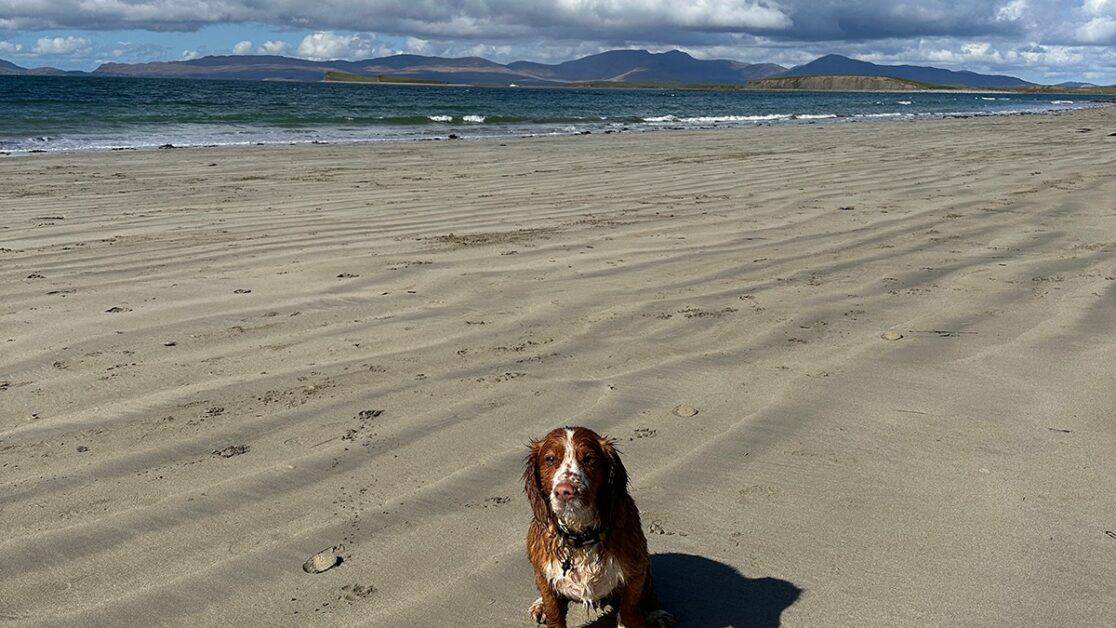
Pet Passport/ Animal Health Certificate
Lastly, you have to have an official travel document. This is either an EU pet passport or a UK animal health certificate.
1. If you have an in-date EU pet passport (not a UK one! ) and all jabs, vaccines and checks are up to date (meaning you’ve gone back to the issuing country in the last year with your pet), you can travel using this to Ireland.
2. If you don’t have an EU pet passport, you need to get an animal health certificate, issued by an approved vet. NOTE: Not every vet can issue one of these.
You can find out more about the animal health certificate and how to get one here .
I would recommend you get the tapeworm and the animal health certificate issued at the same time and make sure the vet signs, stamps and dates your document properly.
Travelling from Britain to Northern Ireland with a dog
There has been a lot of back-and-forth about the rules after BREXIT for visiting Northern Ireland with a dog. When I travelled, it was exactly the same as the rules for visiting the Republic of Ireland but for the most up-to-date information, please check the DAERA website .
However, I can confirm that (at time of writing) you don’t need another tapeworm to travel from the Republic of Ireland into Northern Ireland and vice versa. You also don’t need a tapeworm in order to come back to Britain.
Arriving in Ireland with a dog – what happens?
On the crossing to Ireland, no one checked Mac’s paperwork at all- which is bad! It would have been so easy to arrive in Ireland and realise I’d forgotten it. But there no checks at all at Fishguard.
When I arrived in Rosslare (Ireland), I drove around a corner in the port and found the pet admin area. There were two lovely women who checked Mac’s microchip and paperwork (including the tape worm time and date) and made sure that everything was in order.
And that was it. It was really straightforward.
Note: Bear in mind that if you amend your travel days after the tape worm has been given (as I had to), you’ll need to consider how that impacts the tape-worm travel window.

How dog friendly is Ireland?
Ok, so I’m finally in Ireland with my dog. What’s it really like? Is it true that Ireland is not dog-friendly?
Well, my friend, I’m pleased to share that Ireland is awesome if you have a dog.
I visited Ireland in March and April and I LOVED it. The weather wasn’t great, but we had some sunny days and there were so many beaches which Mac loved to run and play on- we often had huge stretches of them to ourselves. We spent time in the mountains and all around Ireland hiking and enjoying the beautiful scenery.
Now, it’s not all sunshine and roses. There were some weird things you should know about before you bring your dog to Ireland…
- Between beginning of June- mid September, many beaches are closed to dogs, particularly between 11-7pm
- Historic places often ban dogs (as they do here in Britain)
- Pubs, cafes and some restaurants were very dog friendly
- He was allowed at Powerscourt Waterfall (Wicklow Mountains) but not at most other private waterfalls, even when they’re in a park or something.
- THERE ARE NO PUBLIC BINS (see below)
The worst thing about travelling with a dog in Ireland
The worst thing about travelling with a dog in Ireland is that there are no bins in public places. Or very VERY few. The Irish motto is to ‘take it home’ which is wonderful and admirable but useless if you’re touring on a road trip and don’t have anywhere to dispose of your dog’s deposits like a responsible owner.
I found this the most challenging part about vanlife with a dog in Ireland, but I got around it.
- Get a Dicky Bag. This is GENIUS for giving you somewhere hygenic to store your filled baggies until you can find a public bin (and it stops all smells)
- If you have a garage or backbox, use that to store filled baggies until you find a bin
- Visit fuel stations (which almost always have a public bin). I ended up only filling my fuel tank half full so that I had an excuse to stop more often and get rid of rubbish and dog deposits.

5 of my favourite places to visit with a dog in Ireland
Here are some of my favourite places I visited with Mac in Ireland
- Wicklow Mountains
- Portnoo Beach
- Powerscourt Waterfall
- Achill sound (specifically Keel Beach)
- Ladies View and Killarney National Park (Ring of Kerry)
but there are so many more it’s impossible to list them all!
READ MORE: 7 epic Ireland road trip itinerary ideas
Heading back to Britain from Ireland with a dog
The process of bringing your dog back to Britain after visiting Ireland is fairly straightforward, as long as you don’t do a detour into France.
If you’re going directly from Ireland or Northern Ireland back into Britain, you don’t need a tape worm or even need to visit a vet. You just need to have their paperwork on hand when you cross the border.
Would I go to Ireland with my dog again?
In a word? Heck yes! It was fantastic. I definitely wouldn’t go between June- September and I’d be better organised in terms of rubbish and doggie deposits, but I can’t wait to go back and explore again someday soon!
Related Posts:
You might find these posts helpful for planning your Ireland road trip:
- 7 awesome Ireland itinerary ideas
- Motorhoming and campervanning in Ireland – everything you need to know
- Touring with a dog- 10 things they NEED

Kat never planned to buy a motorhome. She also never planned to quit her job as an air traffic controller, go touring around Europe in said motorhome, start one of the UK’s largest motorhome travel websites… or get a cocker spaniel.
Find out how she went from stuck in the rat race to being a digital nomad and inspiring thousands of people to have their own epic adventures here.
If you’d like to connect with Kat, send her an email or follow her adventures on social media.
Last update on 2024-06-11 / Affiliate links / Images from Amazon Product Advertising API
Sharing is caring!
Similar Posts
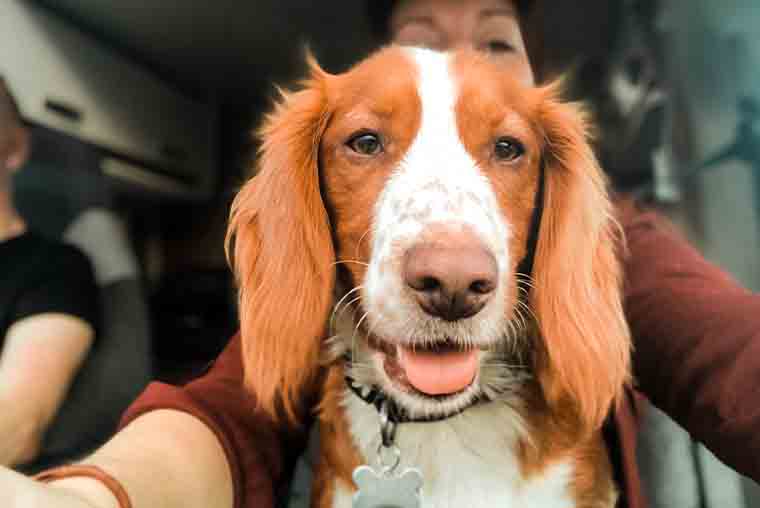

10 essential Dog Motorhome & Caravan travel accessories

Taking a Dog to France or Europe- Complete Guide

Motorhoming and Campervanning in Ireland- The Ultimate Guide
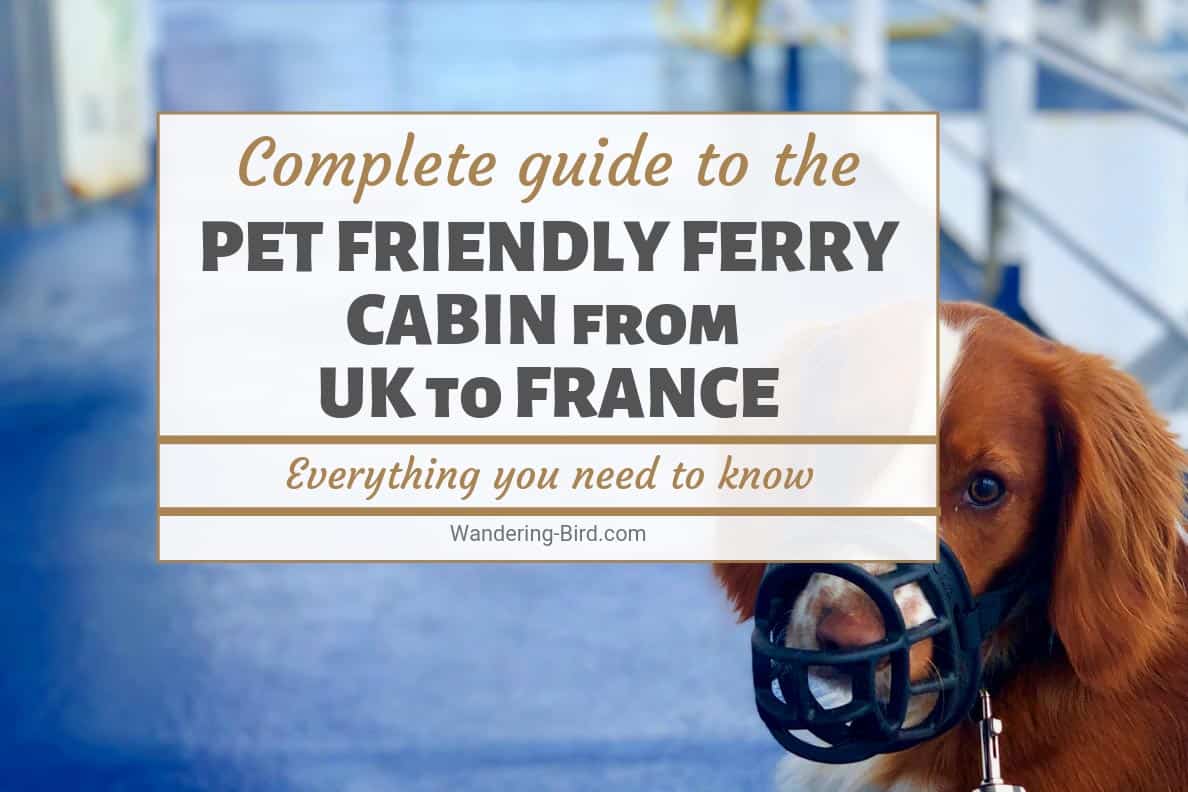
REVIEWED: Pet-friendly Cabin on Brittany Ferries. Worth it, or not?
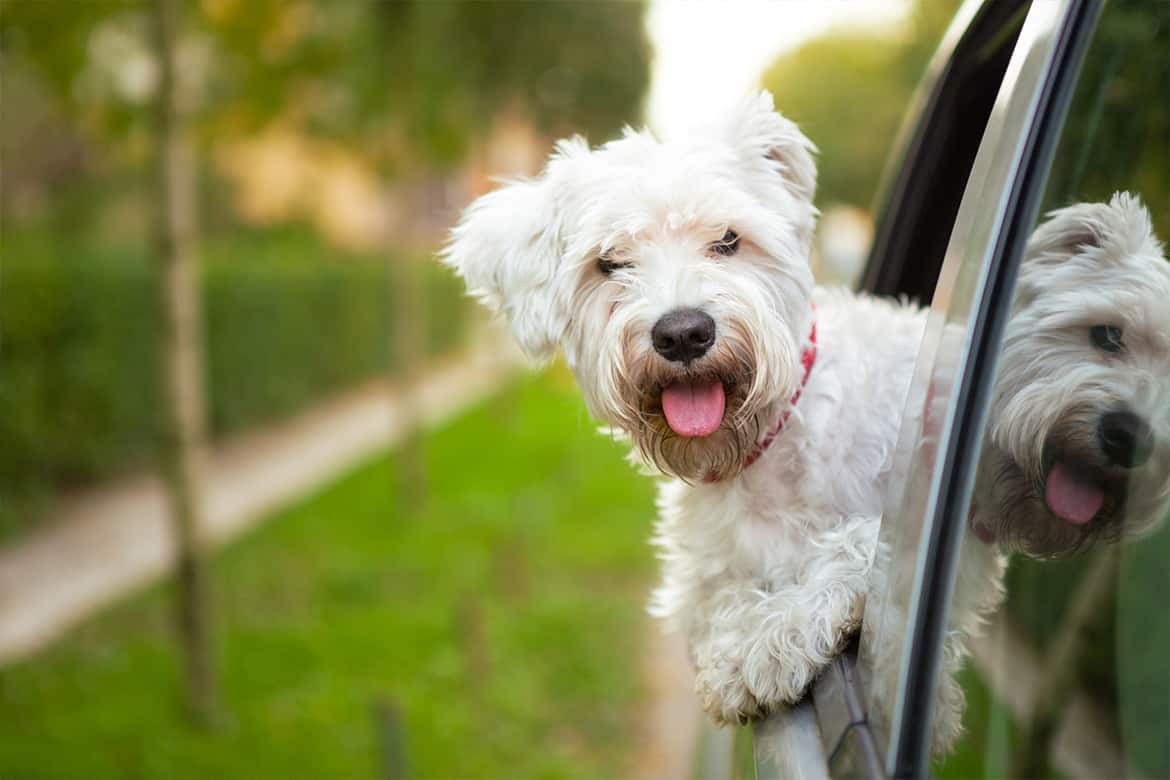
Travelling with a dog this Summer? READ THIS FIRST!

Ireland road trip – 7 epic Itinerary ideas to inspire you
Leave a reply cancel reply.
Your email address will not be published. Required fields are marked *
Save my name, email, and website in this browser for the next time I comment.

Moving to Ireland With a Dog: 23 Absolutely Essential Tips

Moving to Ireland with a dog can seem like a daunting and overwhelming process. The process is much more simple if you can get clear on the steps you will have to follow for your pet and your particular situation.
As a dog mom myself, I know it can be stressful to make sure you are doing the right things so your pet stays comfortable and well-taken care of during a big transition. Here are the 23 essential tips and the steps you will have to take to move to Ireland with your dog.
Jump To… • Can I Bring My Dog if I Move to Ireland? • How Long Does a Dog Have to Be In Quarantine for in Ireland? • How Much Does It Cost When Moving a Dog to Ireland? • Important Information When Moving to Ireland With a Dog • Moving to Ireland With a Dog From the European Union • Moving to Ireland With a Dog From Other Countries (Non-EU) • Moving to Ireland with Assistance/Service Dogs • Official Irish Government Website and Contact Information • Ireland’s Dangerous Dogs List • Ireland’s Dog Vaccinations and Identification Requirements

Can I Bring My Dog if I Move to Ireland?
Yes, in most situations moving to Ireland with a dog is possible. You will have to follow certain requirements depending on what country you are coming from, which I will outline in this article.
The 5 Things I WISH I Knew Before Moving to Ireland
Unsubscribe at any time.
How Long Does a Dog Have to Be In Quarantine for in Ireland?
If your dog is free of tapeworms, has been properly vaccinated and microchipped, and is accompanied by a valid EU pet passport or EU Health certificate , you should not have a problem with having to quarantine your dog.
However, when moving to Ireland with a dog that has not followed the appropriate rules, the dog might be subject to quarantine under official control while the necessary tests or vaccinations are being performed.
How Much Does It Cost When Moving a Dog to Ireland?
Unfortunately, it can be very costly to move to Ireland with a dog. You will need to factor in all elements such as veterinarian visits, vaccinations, microchipping, and tests as well as the actual travel costs and any documentation.
The cost of moving to Ireland with a dog will likely start around $2,000 USD and potentially go up from there, depending on your situation and the cost of living where you are coming from.
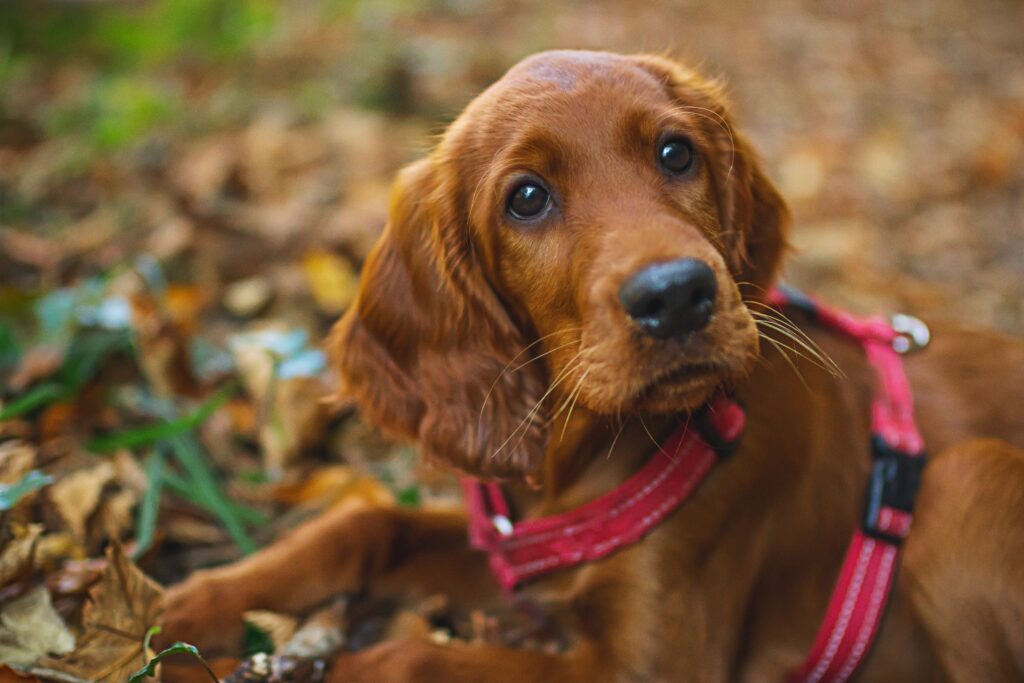
Important Information When Moving to Ireland With a Dog
1. your pet must arrive in ireland with you..
Or if it is accompanied by a person authorized by you, your dog will need to arrive in Ireland within five days before or after you travel.
2. Your pet must be accompanied by original paperwork, copies are not allowed.
3. the maximum number of animals allowed to travel to ireland with you is five..
These pet travel rules apply no matter which country you are traveling from. The only exception is if you are bringing more than 5 dogs to Ireland for a dog show or competition. In this case, you will need to provide written confirmation to [email protected] .

4. If you are buying a dog or other pet abroad and shipping it to Ireland, your pet can not enter Ireland on the typical rules.
Under Ireland’s pet travel rules, if you are going to ship a pet to Ireland and you are not going to collect it and travel home with it you will have to follow a different set of travel rules.
Check here for more information.
5. The same applies if you intend to buy, sell or gift a dog in Ireland.
If there will be any change of ownership involved after your arrival in Ireland, including delivery of a purchased or rehomed animal, you will need to follow the special rules as outlined in the above link.
6. Each individual airline decides whether to carry a dog in the cabin or as excess baggage.
The Irish Department of Agriculture, Food, and Marine does not have a say in this decision.
Many airlines do not fly “dangerous dogs” and most airlines have a carrier dimension and weight maximum for dogs allowed in the cabin.
❗ 7. Your dog might be refused entry into Ireland or placed into quarantine if you do not follow the appropriate rules and meet the required compliance checks.
Moving to ireland with a dog from the european union.
These next set of rules applies to any person moving to Ireland with their pet dog (cat or ferret) from an EU Member State including Andorra, Gibraltar, Greenland, the Faroe Islands, Iceland, Liechtenstein, Monaco, Northern Ireland, Norway, San Marino, Switzerland, and the Vatican City.

Your dog will NOT be required to quarantine when entering Ireland during the move IF…
A. your dog has been microchipped..
The microchip must be inserted FIRST before the dog receives their rabies vaccination. The microchip must be readable by a device compatible with ISO standard 11785.
However, you may bring your own microchip scanner, OR if your pet has a different type of microchip, your vet will be able to remove it and replace it with a chip that is compatible with the EU microchip readers.
b. Your dog has a valid rabies vaccination.
The vaccination must be given after the microchip is inserted and your pet must be at least 12 weeks old before the vaccination is given. Vaccinations must be given by your veterinarian.
Before moving your dog to Ireland, you must wait until the rabies immunity has developed.
The vaccination datasheet will state how long you must wait for immunity to develop, most often it will be between 21 to 30 day s . The vet that administers your dog’s vaccine will be able to let you know how long to wait.
A rabies vaccination with either a 1 or 3-year validity period is acceptable for moving a dog to Ireland.
c. Your dog has a valid EU pet passport.
1. ireland accepts pet passports from all eu countries..
A valid pet passport is one that is issued by an EU country or territory which certifies that the rabies vaccine given to the dog is valid.
2. Your dog will need a valid EU Health Certificate if it does not have an EU pet passport.
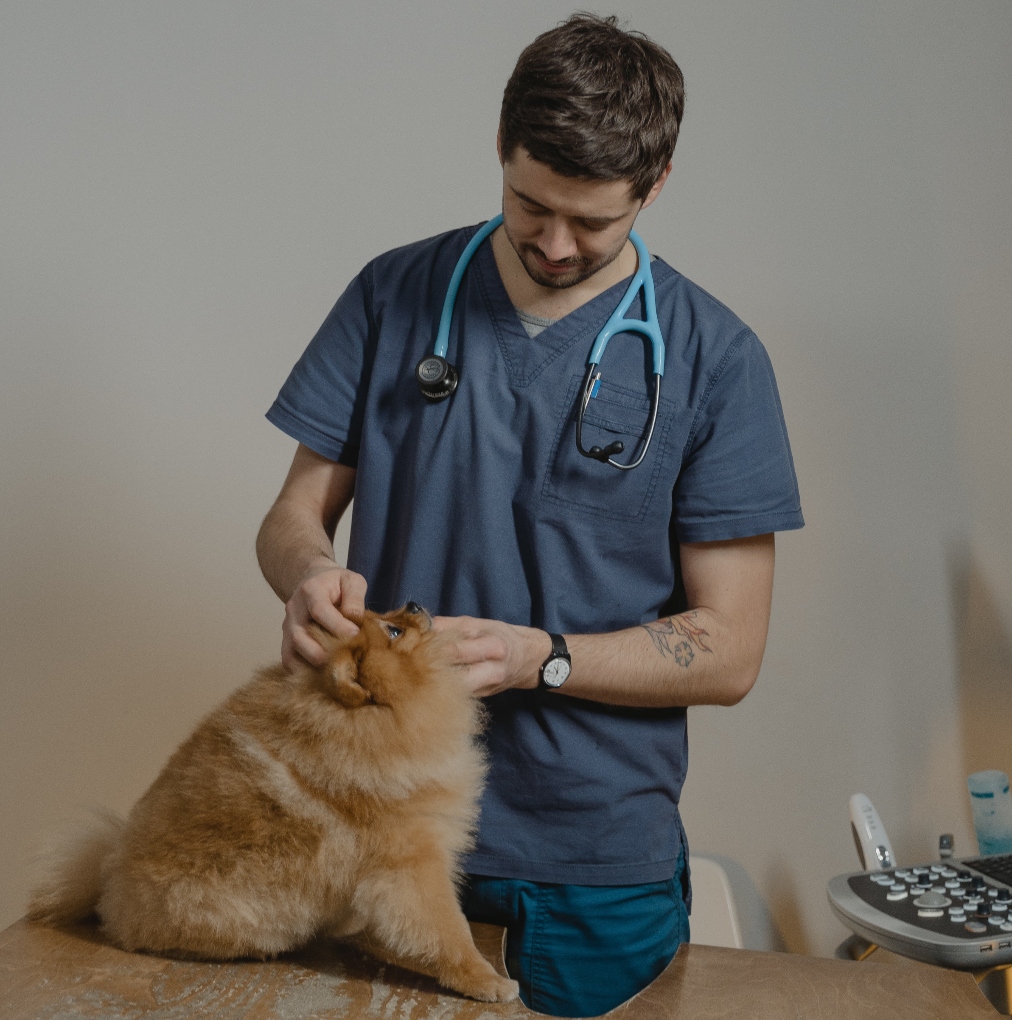
3. Vets in countries outside of the EU are not allowed to complete, sign, or stamp the section for rabies vaccination in the passport.
If they do, the pet passport will become invalid for travel into the EU. For those from other countries, you will need to acquire the EU Health Certificate instead.
4. An EU health certificate must be:
a. Completed by your Veterinarian, AND
b. Signed and endorsed by an Official Veterinarian of the country of departure, within 10 days of the dog’s arrival into the EU, AND
c. Upon arriving into the EU, it will need to be immediately signed and endorsed by the EU country which performs the compliance checks (Ireland in this case).
NOTE: An Offical Veterinarian in this case is a State Veterinarian directly employed by the government from which you are departing (your home country).
5. If you are traveling to Ireland by sea, the validity is extended by the number of sea travel days.
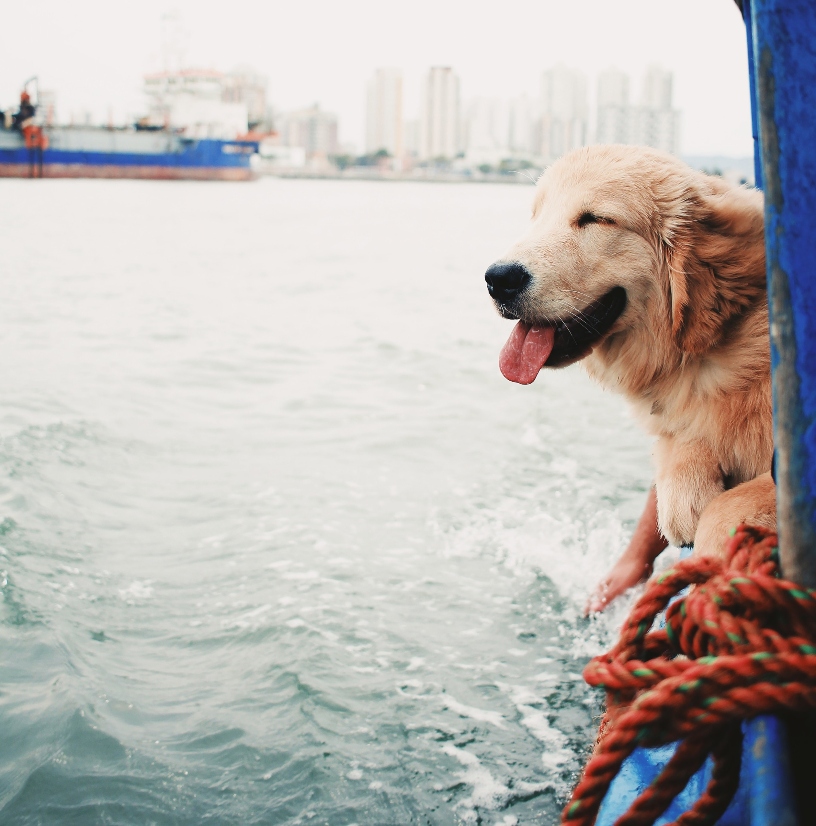
6. Your dog’s EU Health Certificate is valid for travel around the EU for up to 4 months, or until the anti-rabies vaccination expires, whichever comes first.
7. if you are moving a dog to ireland from any country besides finland, malta, northern ireland or norway, a veterinarian must treat your dog for tapeworm..
The treatment will need to be recorded in the dog’s pet passport or EU health certificate each time you travel to Ireland.
The treatment MUST:
- Contain praziquantel.
- Be administered by a veterinarian.
- Be administered no less than 24 hours (1 day) and no more than 120 hours (5 days) before the dog’s scheduled arrival time in Ireland.
8. Dogs entering from EU countries may enter Ireland through any port or airport.
Moving to ireland with a dog from other countries.
For dogs moving to Ireland from MOST other countries outside of the EU, they will need to follow these rules.

Your pet dog will be allowed entry to Ireland and will NOT be required to quarantine IF…
A. your dog has been microchipped.
The vaccination must be given after the microchip is inserted and your pet must be at least 12 weeks old before the vaccination is given. Vaccinations must be given by your vet.
As is the same with dogs moving to Ireland from the EU, your dog must wait until the rabies immunity has fully developed and a rabies vaccination with a 1 or 3-year validity is acceptable for the move to Ireland.
c. Your dog carries a valid EU pet passport or EU Health Certificate (see above information).
D. your dog has been administered tapeworm treatment..
The tapeworm treatment will need to be recorded in the dog’s pet passport or EU health certificate before each time you travel to Ireland.

2. To enter Ireland from outside of the EU, you must give advance notice that you will be bringing your pet dog into Ireland.
3. you will need to arrange in advance to have a pet compliance check carried out on upon your arrival to ireland..
You will not be allowed to leave the airport or port of entry (besides an emergency) before your compliance checks are carried out.
This does not apply if you are arriving from an EU country. However, if you have traveled through another EU country on your way to Ireland and have NOT received a compliance check, you will still need to complete one upon your pet’s arrival to Ireland.
4. Dogs moving to Ireland from outside of the EU will have to pay a fee for compliance checks.
There is no charge for compliance checks on pets entering from Great Britain or for guide dogs.
5. Compliance checks will typically be performed upon arrival to Ireland at the port or airport.
6. pets from non-eu countries may only enter ireland through:.
• Dublin Airport – advance notice can be emailed to: [email protected]
• Cork Airport – [email protected]
• Shannon Airport – [email protected]
• Dublin Port – [email protected]
• (Cork) Ringaskiddy Port – [email protected]
• Rosslare Ferry Europort – [email protected]
Moving to Ireland with Service or Assistance Dogs
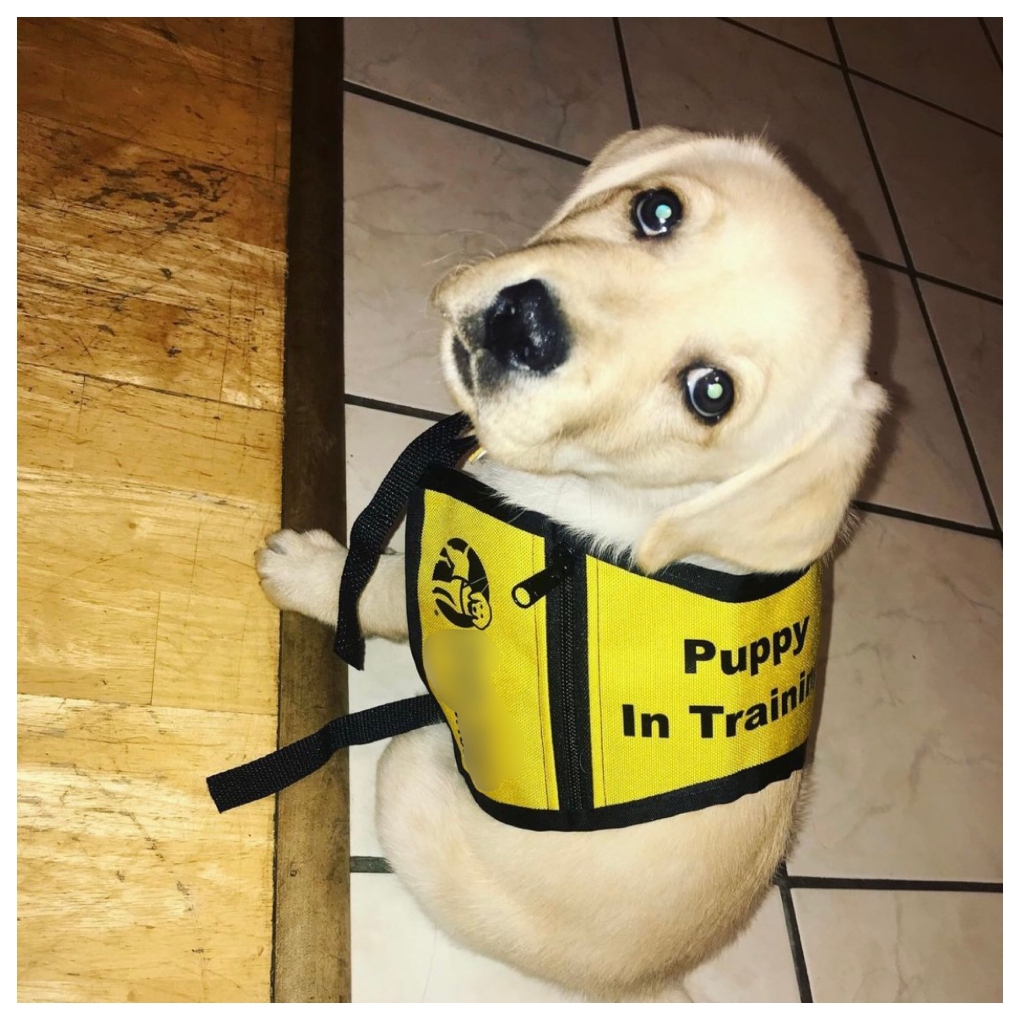
1. Airlines operating within the EU must allow recognised assistance dogs in the cabin of the plane.
This includes disabled passengers and passengers with reduced mobility. All dogs traveling in a cabin of an aircraft must still be compliant with the rules for entering Ireland (outlined above).
2. It is up to the airline to decide if they will allow dogs providing other types of services (such as emotional support animals) to accompany passengers in the cabin of the airplane.
You may have to work with your airline to provide proper verification of your service animal.
3. When moving to or travelling from a non-EU country, you will be required to provide 24 hour (prior to departure time) advance notice of your intention to bring your service dog into Ireland.
For further information on moving to Ireland with your dog, you can check the official website for Ireland’s pet travel. Or, submit any questions here: Email: [email protected] • Telephone from within Ireland: 01 607 2827 • Telephone from outside of Ireland: 00353 1 6072827
Are There Any Other Restrictions for Moving to Ireland With My Dog?
Ireland’s dangerous dogs list.
No dog breeds are banned in Ireland. However, there are a few breeds that are restricted and will have to follow extra rules in Ireland.
The dog breeds on the restricted list are:
- American Pit Bull Terrier
- English Bull Terrier
- Staffordshire Bull Terrier
- Bull Mastiff
- Dobermann Pinscher
- German Shepherd (Alsatian)
- Rhodesian Ridgeback
- Japanese Akita
- Japanese Tosa
- Ban dog – any cross of the above breeds or any strain of the above listed dogs.
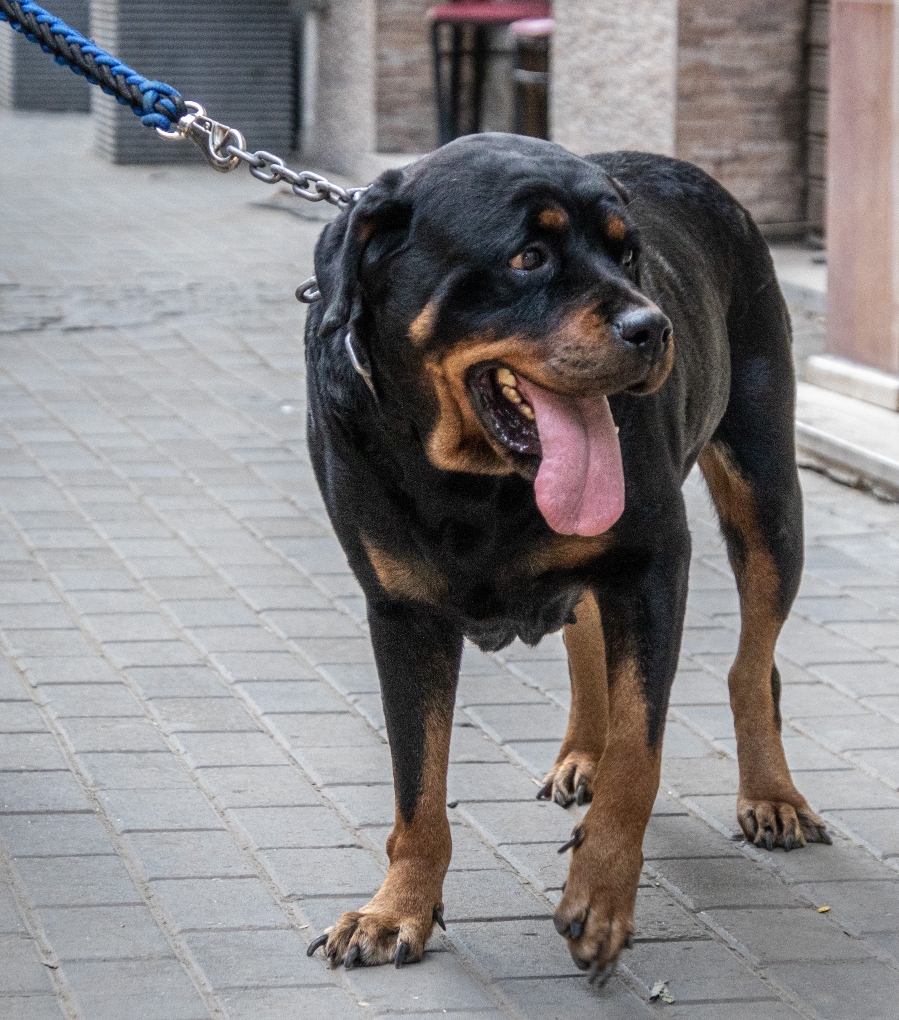
The restrictions these breeds have to follow are:
- Only people over the age of 16 are allowed to handle these dogs.
- These dogs are required to be muzzled in public.
- These dogs are required to be on a short (less than 2 metres/6.6 foot) lead. The leash must either be ‘sufficiently strong’ or a chain.
- At all times the dog must wear a collar with the owner’s information on it. This information should include owner’s name & address.
Ireland’s Dog Vaccinations and Identification Requirements
Dog licensing:.
All dogs over 4 months of age are required to have a license in Ireland. If you are moving to Ireland with a dog and it is going to be staying for more than 30 days then it will need to be licensed.
You can purchase an annual (€20) or lifetime (€140) license for your dog at your local Post Office or buy one online at licences.ie and will be issued by post within 10 working days.
Dog Identification:
Your dog must wear a collar with its accurate name and address. Make sure to update the information upon moving to Ireland. You will also need to have your dog microchipped (as outlined above).
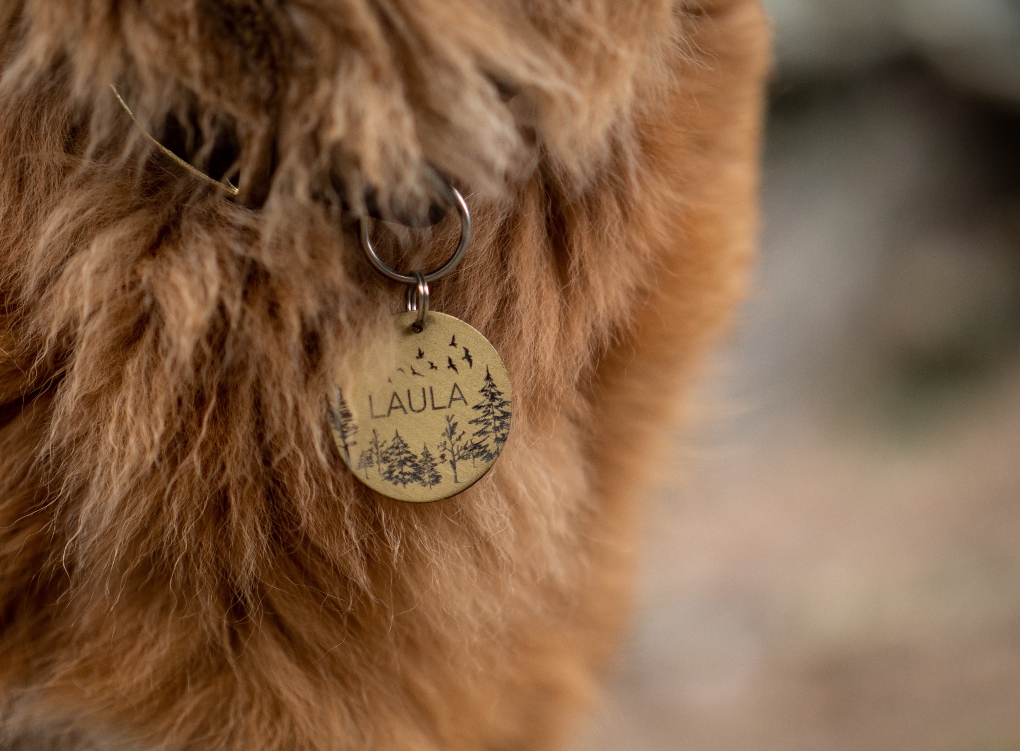
Dog Vaccination:
Dogs in Ireland need to be vaccinated against distemper, hepatitis, parvovirus, leptospirosis, and kennel cough.
Puppies should get vaccinated between 6 to 9 weeks of age and then again at 10 to 12 weeks. Dogs are not considered fully protected until after their second vaccination. Up until this point, they should remain at home to keep them safe from catching a disease.
You will likely need regular ‘booster’ vaccinations to keep your dog immunized and safe against disease. Ask your veterinarian how often your dog will need to be vaccinated.

Making any big move can come with its challenges, especially when it comes to moving abroad and moving your dog to Ireland. Follow the steps outlined above and check the Irish government’s website to stay up to date with the latest requirements and regulations for making the move with your furry friend!
Looking for resources to use for your next trip or move abroad? CLICK HERE for my favorite travel and expat tools!
Related Posts: Are There Snakes in Ireland? Cost of Living in Ireland Jobs in Ireland for Americans
☘️ FAQs About Ireland ☘️ ✈️ Where Can You Find the BEST Flight Deals to Ireland? 1. Scott’s Cheap Flights – FREE flight deals alert, works best if you can be flexible 2. Skyscanner – FREE search engine, great for budget flights + deal ❗ Is Travel Insurance Required in Ireland? No, it’s not. However, it’s always recommended to have travel insurance any time you travel in case of injury, accident, lost luggage, missed flight, etc. The best and most affordable travel/expat insurance is Safety Wing . >>> CLICK HERE FOR INFO ☔️ When Is the Best Time to Visit Ireland? Summer (June-August) – is the warmest and rains the least but you will have the most crowds. Spring (March-May) or Fall (September-November) – are cooler and have more rain but you will beat the crowds and see some incredible wildflowers ( spring )/greenery (fall). 🏠 Where Should You Stay in Ireland? Hotels, hostels, vacation rentals, and house sitting are all available in Ireland for accommodation. My top recommendations for each are: • Booking.com • Hostelworld • Vrbo (usually better options than Airbnb in Ireland) • Trusted Housesitters (watch a home/pets in return for a FREE place to stay) ☘️ Where Can You Find Tours? I found incredible tours in Ireland >>>HERE for private and guided group tours of both the most popular attractions and ones that fit your specific interests. 🚘 Should You Rent a Car in Ireland? I always tell my friends and family to rent a car in Ireland so that they don’t miss out on the gorgeous scenery and wonderful things to do in between the big cities! However, if you plan to stay only in the cities, then you should be fine getting by with buses and walking. >>> What to know about driving in Ireland >>> The best car rental in Ireland 🍻 Make sure to try out the pubs ! Even if you don’t drink, the atmosphere, live music, and friendly people are very uniquely Irish.
Janelle Axton is a travel consultant and owner of Make the Trip Matter, a service dedicated to helping people create a lifestyle around frequent travel and extended time abroad. She grew up in California and spent time living abroad in Ireland in addition to traveling to over 25 countries.
Similar Posts

Top 33 Incredible Day Trips and Tours From Galway (2024)

45 Romantic and Fun Things to Do in Dublin for Couples (2024)

Is the Guinness Storehouse Tour Worth It? Review and Tips (2024)!

Driving in Ireland: 11 Tips and Rules For Tourists (2024)

Top 25 Incredible Things to Do in Howth (2024)

Jobs in Ireland for Americans: How to Find Work as an Expat in 2024
Pet Travel to Ireland [Pet Passport Ireland 2023]

Whether you are planning on visiting Ireland for a holiday, or are relocating there, you don’t have to leave your pets behind!
Taking pets to Ireland is pretty straightforward. Firstly, you need to ensure you have to correct documentation for an Ireland Pet Passport, or EU Pet Passport . Dogs, cats and ferrets are eligible for an EU Pet Passport which allows them to travel freely within the EU. Other pet species such as birds, rabbits and rodents are also able to travel from to Ireland simply, with other documents we will discuss below. Secondly, you will need to organise travel. You can either enter Ireland in a car, ferry or by air.
In this article, we will discuss in detail the process of taking a pet to Ireland. Additionally, we will walk you through how to obtain an Ireland pet passport and all the documents required.
TABLE OF CONTENTS:
- What is a Ireland Pet Passport?
What pet species can get an Ireland Pet Passport?
- Visit the vet
- Organise travel
- Microchipping
- Rabies vaccination
- Tapeworm treatment
- Rabies titer test / rabies blood test
- Health certificate
- CITES permit
- How much does an Ireland Pet Passport Cost?
Commercial transport of pets to Ireland
- Can I take my puppy or kitten?
- What if I lose my Irish Pet Passport?
- Can I travel to Ireland without an Ireland Pet Passport or EU Pet Passport?
- Can I fly with my pet in the cabin of the plane?
Bottom Line
What is an Ireland Pet Passport?
An Ireland is a compilation of documents that your pet needs in order to travel to Ireland. With an EU Pet Passport , dogs, cats and ferrets are able to travel throughout the EU without enduring a quarantine period. Pets will require a microchip and rabies vaccination at minimum, proof of both is needed in order to obtain an EU Pet Passport . All documents must be issued by an official veterinarian within the EU. Essentially, a pet passport demonstrates that your pet is fit and healthy to travel.
The documents required to travel with pets depends on which country you are travelling from, and which country you are travelling to. Each country has different rules and requirements to export and import pets. Requirements and restrictions also vary between pet species. We will discuss the requirements to travel to Ireland in detail below.
What does an Ireland Pet Passport contain?
An Ireland Pet Passport / EU Pet Passport contains all the documents required to travel with your pet. It will basically prove that your pet is fit and healthy to travel.
An Ireland Pet Passport contains the following information:
- Details of ownership (name, address, passport number, telephone, etc.)
- Description of the animal (name, species, breed, date of birth, etc.)
- Official veterinarian’s details
- Microchip information
- Rabies vaccination certificate
- Rabies antibody titer test results
- Parasite treatment records
- Additional vaccination and treatment records
- Pet photo (optional)
At minimum, your Ireland pet passport will contain those listed 1-5. These are compulsory in order to travel within the EU. Those listed 6-9 are potential requirements that your pet may need if you are traveling from outside the EU or from certain countries.
All records are signed and stamped by your official EU veterinarian with official stickers from the medication used.
Currently, under the Pet Travel Scheme , only dogs cats and ferrets are able to obtain an Ireland Pet Passport or EU Pet Passports .
However, this doesn’t mean that you aren’t able to take other pets to Ireland with you. If you wish to travel with a bird, rabbit or rodent, you will simply need alternative documents in order to travel. We will discuss this in detail below.
RABBITS & RODENTS
Rabbits do not require rabies vaccinations or a health certificate if traveling from other EU states as well as Andorra, Switzerland, Croatia, Iceland, Liechtenstein, Monaco, Norway and San Marino .
However, pet rabbits and rodents important to Ireland from any other non-EU rabies controlled country will require a health certificate. Furthermore, they will need to stay in quarantine for 4 months.
Birds are permitted to enter Ireland from other EU Member States or Andorra, Croatia, the Faeroe Islands, Greenland, Iceland, Liechtenstein, Monaco, Norway, San Marino, Switzerland and the Vatican City State .
However you will either need to travel with your bird, or provide an Owner’s Declaration. Furthermore, you will need to send an import form to the Department of Agriculture.
Birds entering Ireland with their owner or owner’s representative from other countries will need to meet the following requirements:
- Application for a Licence to Import Pet Birds, health certificate and Owner’s Declaration must accompany your bird;
- Your bird must reside in an OIE member country ;
- You are not importing more than 5 birds;
- Your bird must have undergone isolation for 30 days prior to export; OR
- Two vaccinations against avian influenza with the H5 vaccine between 60 days and 6 months of import; OR
- 10 days of isolation and undergone a test to detect the H5N1antigen or genome; OR
- 30 days of quarantine in a registered premesis in the United Kingdom or other EU countries;
- All permits must accompany birds that are covered by CITES; and
- Export permits may be required by the wildlife authority in the exporting country.
Birds must be imported at either Dublin or Shannon Airport.
For more information on the Pet Travel Scheme, check out What is The Pet Travel Scheme (PETS)? .
What is the process of obtaining a Pet Passport for Ireland?

VISIT THE VET
You will need to visit the vet to obtain your pet’s passport.
Before booking your appointment, check that your chosen vet is authorised to issue EU Pet Passports . Not all of them are.
At your appointment, your vet will administer your dog, cat or ferret with a microchip and rabies vaccination, if your pet hasn’t already had them. They will also perform a basic health examination to ensure your pet is healthy enough to travel. Once the veterinarian is satisfied that your pet is ready for travel, they will review all the paperwork and complete the pet passport booklet.
If you are traveling with a bird, rodent or rabbit, you should obtain a health certificate. This is only a requirement to enter Ireland from non-EU countries, however many airlines will require a health certificate to transport pets. It’s also a good idea to have the health of your pet checked for yours and your pets own wellbeing.
You will need to bring the following with you to the vet appointment:
- Your passport
- Your local address
- Microchip information (if your pet already has one) – date of implantation, chip number and issuing company information (this info is also on the Annex IV)
- Pet’s rabies certificate or rabies titre test results no less than 21 days old (if your pet has one)
- Annex IV form completed by your home vet and endorsed by your country’s official veterinary regulatory body (if you are from outside the EU)
- Pet photo (optional but recommended) – the size should be 2 x 2 inches (5cm x 5cm). It is better to have one as you do not want to give any customs official a reason to deny your pet entry into a country.
If your pet hasn’t yet been microchipped or vaccinated against rabies, don’t worry, your vet will complete these at the appointment.

ORGANISE TRAVEL
You will then need to figure out how you are traveling to Ireland. The easiest option is to travel by car, however you can also travel by air. Traveling by air is far more complicated as airlines have very specific rules and regulations when it comes to traveling with pets. Some airlines may even prohibit certain pet species, and breeds from boarding their planes.
When importing pets to Ireland, you must:
1. Enter Ireland through Cork, Dublin or Shannon Airport, or Cork or Rosslare Port.
There are compliance checks that may need to be completed when pets enter Ireland. These can only be done at these specific ports of entry.
You can enter Ireland from any port if traveling to Ireland with a dog, cat or ferret from EU states, as well as Andorra, Switzerland, Croatia, Iceland, Liechtenstein, Monaco, Norway and San Marino, you can enter at any port.
If you are traveling from any other country, you must enter through Cork, Dublin or Shannon Airport, or Cork or Rosslare Port.
2. Inform the Department of Agriculture in Ireland, if required.
All dogs, cats and ferrets traveling from outside the EU, or those traveling with other pet species from anywhere, must provide advanced notice to:
- Dublin airport [email protected]
- Shannon airport [email protected]
- Cork airport [email protected]
- Ringaskiddy port, Cork [email protected]
- Rosslare ferry port [email protected]
3. Organise compliance checks for your pet in advance of your arrival to Ireland.
All dogs and cats will undergo a health check upon arrival in Ireland. They must be found free of any evidence of disease communicable to humans. If your dog or cat is not in apparent good health, further examination by a licensed veterinarian may be required at your expense.
You can email your port of entry (see contact email addresses above) and must include the following information:
- Date and time of arrival;
- Flight Number;
- Number of animals to be checked; and
- Paperwork the pet will be travelling with e.g. EU Pet Passport or EU (Annex III) Health Certificate.
If you do not follow these rules, or your pet fails the compliance checks, you risk being refused entry. Alternatively, your pet may be placed into quarantine for the necessary tests or vaccinations. In very limited circumstances, your pet may be euthanised.
Travelling to Ireland in a car or ferry
You can take your pets to Ireland on a ferry, with or without a car. However, some ferry companies do not allow foot passengers to bring pets on board. Therefore you may only be able to transport pets to Ireland in a car.
Some companies will charge extra to bring your pet on board, while others don’t.
Whichever option you choose, be sure to let the company know that you will be bringing your pet with you. It is best to do this well in advance to ensure for a smooth journey.
Many ferry companies require pets to stay inside vehicles, which is why foot passengers are not permitted to bring pets.
Travelling to Ireland by air
Traveling to Ireland with pets by air is far more complicated than traveling by car or ferry. This is because airlines have strict rules, regulations and restrictions when it comes to traveling with pets. Many airlines will not allow pets to travel on their planes at all, however there are some that will.
Traveling via air is far more expensive too, as you will need to pay extra to ship your pet. The price will vary between airlines, and depending on the weight and size of your pet.
1. Before booking your flight, be sure to check out different airline’s policies to ensure that you are able to take your pet with you.
Some airlines may allow your pet to travel in the cabin with you, where others will require pets to travel in the cargo area of the plane. If you have a small dog or cat, then you may be able to take them in the cabin with you. However, if you have a large dog then he will need to fly in the cargo.
- 13 Airlines That Allow Flying With Dogs In-Cabin [Prices & Policies]
- 13 Airlines That Allow Flying With a Cat In-Cabin [Prices & Policies]
- Which Airlines Allow Ferrets In Cabin? [Policies & Prices]
- 13 Airlines That Allow Pet Birds on Planes [Policies & Prices]
- 7 Airlines that Allow Rabbits in the Plane Cabin [Policies & Prices]
2. All pets must enter Ireland through Cork, Dublin or Shannon Airport.
All pets must enter through these airports, and must undergo a compliance check. They will check all of your documents and do a health check on your pet. You must organise this with your port of entry.
3. When booking your flight, inform the airline that you will be bringing your pet with you.
Do this as soon as you book your flight, as airlines often have limitations on how many pets they can ship at any given time.
4. Be sure to get an appropriate travel carrier and get your pet used to spending time in it.
Different airlines have different size and weight restrictions when it comes to pet travel carriers. Be sure to check those of your chosen airline. If traveling in the cabin of the plane, the carrier must be small enough to fit underneath the seat in front of you.
To ensure that the journey is as stress-free as possible for your pet, ensure they are comfortable in their travel carrier.
What are the requirements for an Ireland Pet Passport ?

In order to get an Ireland Pet Passport, your dog, cat or ferret requires the following:
REQUIREMENT 1: MICROCHIPPING
All dogs, cats and ferrets must have a microchip in order to obtain an Ireland Pet Passport. No other pet species require a microchip.
A microchip is a electronic chip that holds a unique number traceable with a chip reader. It is place just under your pet’s skin in between its shoulder blades.
We recommend that this is the first step in the process of obtaining an Ireland Pet Passport. This is because if your pet isn’t microchipped before they get their rabies vaccination, then the vaccination may not be valid. This would therefore mean your pet would have to get vaccinated again.
REQUIREMENT 2: RABIES VACCINATION
All dogs, cats and ferrets must be up to date on their rabies vaccinations. No other pet species require rabies vaccinations.
In order to get an Ireland Pet Passport, you must be able to prove that your pet has had their rabies vaccination within the past year, but at least 21 days before your arrival in Ireland.
Ireland accepts the 3 year rabies vaccination for dogs, cats and ferrets. However, it should only be applied as a booster (not the initial vaccination).
Once your pet has entered Ireland, a 21 day waiting period is not required for subsequent visits, as long as their rabies boosters are kept up to date, and the other entry requirements are met.
If your pet is entering Ireland from a high-risk rabies country , it must wait for a minimum of 30 days after the primary or booster vaccination before receiving a rabies titer test. Please see below.
Rabies-controlled (listed Third) countries as classified by the European Union:
High-rabies (non-listed Third) countries as classified by the European Union:

It may be possible that you require the following:
- Health certificate (ANNEX III Form)
REQUIREMENT 3: TAPEWORM TREATMENT
Dogs will need a tapeworm treatment if traveling from any country other than UK, Finland, Malta or Norway. This only applies for dogs.
All dogs must be wormed by a vet, with this recorded in their pet passport.
The treatment must contain praziquantel and must be administered by a veterinarian. This needs to be done between 5 days (120 hours) and 24 hours before returning to the UK, based on your arrival time in Ireland. If you fail to have your dog treated within this time scale, then he or she may be put into quarantine for up to 4 months.
REQUIREMENT 4: RABIES TITER TEST
All dogs, cats and ferrets traveling from a high-risk rabies country , must pass a rabies titer test (rabies blood test).
A rabies titer test is a blood test to see whether your pet’s rabies vaccination was successful. Your veterinarian will need to take a blood sample at least 30 days after the rabies vaccination. The sample will then be sent to an EU -approved blood testing laboratory . The blood rest results must show that the vaccination was successful – i.e. your pet’s blood must contain at least 0.5 IU/ml of the rabies antibody.
You must wait 3 months before your pet can enter Ireland. If you do not wait 3 months, then your pet will be quarantined in Ireland for the remainder of the time.
REQUIREMENT5: HEALTH CERTIFICATE (ANNEX III FORM)
Dogs, cats and ferrets will not require a health certificate. However, all other pet species will.
Only dogs cats and ferrets are able to obtain official EU Pet Passports / Ireland Pet Passports. Rabbits, birds, rodents, reptiles and amphibians will require official health certificates.
Any pets being transported for commercial reasons, such as adoption and re-sale, must be accompanied by a health certificate. See section on commercial transport of pets below.
REQUIREMENT 6: CITES PERMIT
Only if your pet is an endangered species, you will need to apply for a CITES Permit.
If your pet is not a dog, cat or ferret, and especially if it is a turtle or parrot, you should verify that it is not protected under CITES. You can check whether your pet is protected here .
How much does an Pet Passport for Ireland cost?
The cost of an Ireland Pet Passport is usually around £60-£100. The cost is broken down into the following costs:
- Microchipping – £0-20
- Rabies vaccination – £0-20+
- Pet passport application – £60
Firstly, different countries and veterinary clinics will have different pricing for a pet passport. Check the prices of a few different veterinary clinics if you want to save some money. Some will also offer pet passport packages.
Additionally, some pets species may require more treatments and vaccines than others. For example, dogs may require a tapeworm treatment where cats and ferrets do not.
If your pet already has a microchip, and a recent rabies vaccination, you will probably pay less for your Ireland pet passport. This is because you will only be paying for the health check and the documents.
For more information on the cost of an EU Pet Passport , check How much does an EU Pet Passport cost? .
For information on how to get free microchipping in the UK check How to get Dog Microchipping for Free in the UK .
Any dogs, cats and ferrets being transported for commercial reasons, such as adoption and re-sale, require the following:
- Valid rabies vaccination;
- Undergo a health examination and be accompanied by an Annex I Health Form;
- Be accompanied by original paperwork, signed by a licensed vet; and
- A successful rabies titer test result.
Pets are only permitted to enter Ireland from a high-rabies country if they are accompanied by their owner or a legal representative of the owner.
DOCUMENT ENDORSEMENT
A licensed veterinarian must complete the English version of the commercial EU health certificate for Ireland within 48 hours of entry. If your pet is traveling from the US or Canada, the veterinarian must be accredited by the USDA or CFIA respectively and the commercial EU health certificate must be endorsed by the local USDA or CFIA office unless the certificate is completed by a military Veterinary Corps Officer or GS-0701 series civilian government veterinarian employed by the military. If traveling to Ireland from another country, then the forms must be endorsed by the government agency responsible for the import and export of animals.
ADDITIONAL VACCINATIONS
All dogs must be vaccinated against distemper. If traveling from a country other than the UK, Finland, Malta or Norway must also be treated against tapeworms.
If your pet is entering Ireland from a rabies-controlled country , it must enter through an approved Border Inspection Post (London Heathrow or Gatwick Airports). You must give them at least 24 hours prior to arrival.
Which breeds are banned from entering Ireland?
The following breeds of dogs or their crosses are not banned but are controlled while in Ireland:
- American Pit Bull Terrier;
- English Bull Terrier;
- Staffordshire Bull Terrier;
- Bull Mastiff;
- Doberman Pinscher;
- German Shepherd (Alsatian);
- Rhodesian Ridgeback;
- Rottweiler;
- Japanese Akita; and
- Japanese Tosa.
Owners of these dog breeds are responsible for their pet’s actions, and are liable for injuries or attacks. In public places, they must be on a strong, short lead. The person holding your dog must be over 16 years old, and your dog must be muzzled. The court, if they deem the dog as dangerous, sadly has the power to have your dog euthanised.
Frequently Asked Questions [FAQs]
Can I take my puppy or kitten to Ireland?
Yes, as long as your puppy or kitten is at least 4 months old. This is because Ireland requires dogs and cats to be vaccinated against rabies, which can only be administered to pets over the age of 3 months. You must then wait 21 days after the vaccination, before entering Ireland. Additionally, proof of age should be available.
Can I travel without an Ireland Pet Passport or EU Pet Passport
Yes, you may enter Ireland without an Ireland Pet Passport or EU Pet Passport as long as you have an EU Health Certificate (also known as EU Annex III Health Certificate.
What if I lose my Ireland Pet Passport?
If a passport is lost or stolen, it can be replaced as long as you have evidence of the animal’s vaccination record and blood test result (if applicable). Both records must also show your pet's microchip number. Details of the lost or stolen passport, including its serial number, country and date of issue (if known) should be recorded on the Pet Passport Control Sheet. We recommend that you scan photos of your pet passport in case you lose it.
Can I take my pet in the plane cabin with me?
It is a possibility yes. If you are the owner of a small dog or cat, then you may be able to take them in the cabin with you. However, only some airlines will allow this.
Taking pets to Ireland is pretty straightforward. If you are taking a dog, cat or ferret, you will need to get them an Ireland Pet Passport or an EU Pet Passport . This involves getting your pet microchipped and vaccinated against rabies at the vet. If you are taking another pet species with you, then they will not need a microchip or rabies vaccination, but you will need a health certificate at minimum. You may also require an import permit.
Traveling to Ireland with pets in a car or ferry is far simpler than flying. This is because airlines have strict rules and regulations to follow when traveling with pets. If you are planning on flying with pets to Ireland, ensure you select an airline that will permit the transport of your pet, and plan your trip well in advance.
Hope you have found this helpful. Happy travels!
- How Much Does an EU Pet Passport Cost?
- How to get an EU Pet Passport [GUIDE]
- How Much Does a Dog Passport Cost in the UK?
- How to take a Dog on The Eurotunnel [Guide, FAQ & Prices]
- How to take a Cat on The Eurotunnel [Guide, FAQ & Prices]
- How to take a Ferret on The Eurotunnel [Guide, FAQ & Prices]
- What is The Pet Travel Scheme (PETS)? [GUIDE]
Related Articles
![travel to ireland with a dog Photo of How to Safely Secure Dogs When Camping? [5 Methods]](https://www.petsthattravel.com/wp-content/uploads/2023/11/how-to-secure-dogs-when-camping-390x220.jpg)
How to Safely Secure Dogs When Camping? [5 Methods]
![travel to ireland with a dog Photo of Do All Dogs Have Webbed Feet? [Breed Info & Paw Care]](https://www.petsthattravel.com/wp-content/uploads/2023/11/do-all-dogs-have-webbed-feet-390x220.jpg)
Do All Dogs Have Webbed Feet? [Breed Info & Paw Care]
![travel to ireland with a dog Photo of Can Pit Bulls Swim? [Breed Facts & FAQs]](https://www.petsthattravel.com/wp-content/uploads/2023/11/can-pitbulls-swim-390x220.jpg)
Can Pit Bulls Swim? [Breed Facts & FAQs]
![travel to ireland with a dog Photo of Do Newfoundland Dogs Like Water? [Breed Facts & FAQs]](https://www.petsthattravel.com/wp-content/uploads/2023/11/newfoundland-dog-water-390x220.jpg)
Do Newfoundland Dogs Like Water? [Breed Facts & FAQs]
Leave a reply cancel reply.
Your email address will not be published. Required fields are marked *
Save my name, email, and website in this browser for the next time I comment.
TAKING YOUR PET ABROAD

Checking in and boarding
Wondering what the journey with your pet will be like? Our step-by-step guide to travelling with Brittany Ferries with your pet explains all.
Essential checklist
VISIT YOUR VET - If you do not have an EU-issued pet passport, you must get an Animal Health Certificate (AHC) from your vet every time you travel
MICROCHIPPING - Your pet must be microchipped, and the microchip number and date must be entered correctly on the pet passport/AHC. The microchipping date must be prior to the rabies vaccination
VACCINATION - Your pet must be vaccinated against rabies, and the vaccination information must be entered correctly on the pet passport/AHC
TAPEWORM - To re-enter Ireland, your dog must have tapeworm treatment administered whilst abroad. The treatment must be done more than 24 but less than 120 hours before scheduled arrival time in Ireland and must be entered correctly on the pet passport/AHC. See our list of vets near our ports for vets we recommend
MUZZLE - Your dog must wear a muzzle in all areas of the ship when outside of your vehicle or the kennel/pet-friendly cabin. Make sure you have familiarised your dog with the muzzle
YOUR VEHICLE - Make sure your pet has water, absorbent bedding and adequate ventilation in your car for the duration of your sailing
Pre-check that your pet is ready for travel!
When you've booked with us, check that your pet's documentation is compliant by using our simple, free and secure pet travel pre-check . Available from 96 hours before your departure, simply log in with your Brittany Ferries account details and you can get instant confirmation whether your pet's travel documentation is valid to travel.
BEFORE YOU ARRIVE
Make sure your pet is happy to travel in your car - potentially for long periods and in hot conditions, especially if you are travelling in the summer.
If your pet has to stay in the car during the sailing, make sure you leave them plenty of space along with food, water and some toys!
Don't give your pet too much to eat or drink before the ferry sails and allow adequate time to enable them to exercise, go to the toilet and settle down before boarding.
CHECKING IN
Passengers must check-in at least 90 minutes before departure. Ensure that your pet is exercised and toileted before you board.
When you check in we will place a ‘pet sticker’ on your car windscreen, this must stay in place until you have left the port of arrival.
Your pet and its documentation will be checked when arriving or departing from any of our ports in Ireland, France and Spain.
You will need to scan your pet’s microchip when checking in and present the pet’s documentation when departing and arriving in Ireland, France and Spain.
DURING YOUR SAILING
There are three options for travelling with your pet on our ferries, dependent on which ship and route you are travelling on. They can either travel in a pet-friendly cabin (where your pet can stay with you during the sailing), in onboard kennels or in your vehicle. On ships where there are no kennels or pet-friendly cabins your pet must remain in your vehicle.
You will be given instructions on the procedure for the transfer of your pet from the car to the kennel or pet-friendly cabin by the crew when boarding. If your pet is staying in your vehicle, you will need to make sure they are settled for the journey.
Be sure to take everything you need with you when you leave the garage as the car decks are locked once the ship has sailed. In some circumstances, you may be able to arrange to visit your pet mid-voyage. Please ask at the Information Desk on board to arrange a time to visit as you will need to be escorted by a member of crew.
With the exception of assistance dogs, pets are only permitted in the areas designated for pets on board the ship. These will be signposted on board.
Pets must be muzzled and on a lead at all times outside of the kennel/pet-friendly cabin. This means during the journeys between your vehicle and the kennel/cabin, the kennel/cabin and the exercise area and whilst in the exercise area.
Muzzle training your dog

Making your pet comfortable
If not staying with you in a pet-friendly cabin, your pet will spend most of their time at sea by themselves. So it is vital that you do everything you can to make them comfortable and happy.
Whether they are travelling in a kennel or in your vehicle, be sure to provide food and water as well as familiar toys or blankets for your pet during the journey.
When staying in your vehicle, make sure there is enough ventilation for your pet. Creating a flow of fresh air can be helped by opening both the driver and passenger front windows. Take care to ensure that your dog cannot escape from their carrier or your vehicle. It is worth bringing window grilles with you to help with ventilation and preventing escape.
Your pet will need plenty of space during the journey and when left in the vehicle. Whether unconfined or in a crate they will need to be able to sit and stand up at full height, turn around easily and lie down in a natural position, and must not be able to escape.
Visiting your pet
On Pont-Aven, you have direct access to your pet’s kennel whenever you wish (except during cleaning times, 30 mins twice a day) so you can visit them throughout the sailing. Cats are not allowed to stay in kennels and must stay in your vehicle. If your pet is staying in your vehicle on Pont Aven or Armorique, any visit to check on them must also be arranged with the crew as the car decks are locked once the ship sets sail.
You can request to visit your pet by reporting to the Information Desk after boarding. Visits are at the discretion of the crew and will be weather permitting. You will be escorted by a member of crew. Your pet will not be allowed to leave the vehicle during this visit.
You are responsible for cleaning up after your pet on board and suitable dustbins are provided in the designated pet areas.
ARRIVING IN FRANCE OR SPAIN
Once you have left the ferry, find somewhere safe to pull over and get your dog out of the car. This will allow you to check them over and gives an opportunity for them to go to the toilet and stretch their legs.
The vets can often get quite full, so book your vet appointment as soon as you can for your return journey. Check the opening times of the vet local to your stay as soon as you arrive.
RETURNING TO IRELAND
Many vets are closed on Sunday and Monday - remember this when complying with the "between 24 and 120 hours" rule for tapeworm treatment for dogs. Also remember to check if it is a bank holiday in the country you are visiting when you want to return as this will affect the opening times of vets.
IMPORTANT INFORMATION
Consider the length of the journey and how this may affect your pet. Your pet must be fit to travel and we recommend that you consult your vet before the journey. Brittany Ferries cannot accept liability for any adverse reaction that your pet has to the journey or facilities provided.
Pet travel is very popular and space is limited and subject to availability. Early booking is recommended to avoid disappointment.
If any element of the pet's documentation or microchip procedures should fail, we will only carry the animal if quarantine arrangements have been made, at the owner's expense. for arrival in Ireland.
Passengers should be prepared for an inspection by DAFM upon entry into Ireland, to ensure that all procedures have been properly followed and that documentation is in order. A failure at this stage could result in the pet being either re-exported or placed in quarantine (at the owner's expense).
Owners/ escorts are solely responsible for being aware of, and complying with, regulations in their country of destination. They should also be aware that some countries have prohibitions and special regulations regarding certain breeds of dogs, and that they may be refused entry or transit. Please contact the appropriate authorities (eg the Embassy) of the countries you are travelling to and through, or DAFM for further information. Brittany Ferries will not accept any responsibility if your pet is refused entry to the country of destination, or any country in transit.
We're unable to accept bookings:
On the day of departure
For unaccompanied pets
For those travelling by foot, bicycle or motorcycle
For rabbits

Book a ferry

Search a holiday
Routes & Ports
Our ferries, onboard experience, planning your journey, destinations, self-catering holidays, highlighted holidays, hotels, breaks & tours, discover france, discover spain, inspiration, useful links, travel extras.
Please enable JavaScript to continue using this application.

Every restricted dog breed in Ireland and the rules owners must follow
Owning a dog is a big commitment, and with certain breeds of dogs , there comes a particular set of rules and regulations.
There has been a great deal of discourse surrounding the legislation that should be in place for dogs around Ireland, and what penalties should be utilised if there is a breach of any rules.
Although there have been calls for the government to ban XL Bully dogs in Ireland, like in the UK, there has not been any confirmation that they will do so, although Helen McEntee has said there should be bans on some breeds.
READ MORE: Relative of dog attack victim says she 'treated them like babies' and tributes to 'girl with great heart'
READ MORE: Shock and tributes as woman killed in Limerick dog attack named - as it emerges she died on her birthday
As it stands, there are 11 different dog breeds listed as a restricted dog in Ireland, meaning that their owners are required to follow a strict set of rules. Here is everything you need to know about the current rules in Ireland surrounding restricted breeds:
Restricted list
No breed of dog is currently banned in Ireland. But, if you have certain types or breeds of dog, there are additional rules you must follow. This applies to the following types of dogs, as well as strains or cross-breeds of these breeds:
- American pit bull terrier
- English bull terrier
- Staffordshire bull terrier
- Bullmastiff
- Dobermann Pinscher
- German shepherd (Alsatian)
- Rhodesian ridgeback
- Japanese Akita
- Japanese tosa
In Ireland restricted dogs (or strains and crosses of them) must be:
- Kept on a short strong lead (under two metres)
- With someone over the age of 16, who is able to control them
- Muzzled when in a public place
- Wearing a collar with the name and address of their owner, at all times
Exceptions to the law
These exceptions mainly apply to law enforcement, border protection or other essential services.
- Dogs kept by Garda Síochana and the Defence Forces,
- Dogs kept by the Dublin Port, Docks Board Harbour Police or any Airport
- Police and Fire Service at a State Airport.
- Dogs kept by the Central Fisheries Board or a Regional Fisheries Board,
- Dogs kept by the Customs and Excise service of the Revenue Commissioners,
- Dogs that are properly used in the search and rescue of a missing person.
Join the Irish Mirror’s breaking news service on WhatsApp. Click this link to receive breaking news and the latest headlines direct to your phone. We also treat our community members to special offers, promotions, and adverts from us and our partners. If you don’t like our community, you can check out any time you like. If you’re curious, you can read our Privacy Notice .


The Most Dog-Friendly Ferry to All of Ireland
When we were putting together our itinerary for visiting the United Kingdom in 2017 with our dog, we never considered not hopping across the Irish Sea to Northern Ireland and the Republic of Ireland .
Considering that we were hiring a car and dogs are not usually allowed to fly in the cabin in the UK, taking a ferry across made the most sense. But what’s the best ferry to take to Ireland with your dog?
Note: This post contains affiliate links, which means I may receive commission if you make a purchase using the links.

Ferry Options from Great Britain to Ireland
There are multiple ferries available between Great Britain and Ireland (both Northern Ireland and the Republic of Ireland), with a number of companies offering a variety of routes. On most but not all routes dogs are permitted.
At the moment, there are three dog-friendly ferry options available for travelling from Great Britain to Northern Ireland . You’ve got the choice between the Stena Line Ferry from Cairnryan (in Scotland) to Belfast, the P&O Ferry from Cairnryan to Larne, and the Stena Line Ferry from Liverpool to Belfast .

If you’re travelling from Great Britain to the Republic of Ireland with a dog , there’re four ferry options available, all departing from Wales. Stena Line Ferry crosses from Holyhead to Dublin and from Fishguard to Rosslare. Irish Ferries also operates from Holyhead to Dublin, plus Pembroke to Rosslare.
Note that dogs are no longer permitted on the P&O Ferry from Dublin to Liverpool. (We took this ferry when returning to England from Ireland, but found it was not at all dog-friendly, so it’s good dogs are no longer permitted.)
For more details on all of these ferries, check out my full guides on travelling to Northern Ireland with a dog and travelling to the Republic of Ireland with a dog .
The Most Dog-Friendly Ferry to Ireland
So, with seven different ferries available, operated by three different companies, what’s the best ferry to take to Ireland if you’re travelling with a dog and aren’t locked into departing from or travelling to a particular port?
Pets Can Travel for Free
Firstly, there’s no additional charge for booking a pet, if you leave your pet in your car (if you have one) or check them into a kennel. This applies regardless of whether you are are travelling in a car or on foot. However, there is now a charge if you use the Pet Lounge on board the ship.
A Quick Crossing
Secondly, it’s such a quick trip. The total journey time is just 2 1/4 hours, compared to an 8-hour voyage if you’re taking the ferry from Liverpool to Belfast.
On longer journeys, we all worry about our pets holding their bladder. Even if there’s somewhere for them to do their business, often they might to refuse. Plus there’s the risk of them overheating on warm days if they stay in your car.
Small Pets are Permitted on the Passenger Deck
Unlike on some routes, if you’re travelling with a small pet on this route, you don’t need to leave them in a car or kennel. The number one reason why I’ve chosen this ferry as the most dog-friendly ferry is that small pets are allowed on the passenger deck with you!
When I travelled on this ferry, passengers with a small pet in a pet traveller case were permitted anywhere on board, but since May 2023 there is now a dedicated Pet Lounge onboard each of the vessels on this route.

Up to 10 pets in carry cases and 30 passengers can be accommodate in the Pet Lounge, located on Deck 7. There is a charge of €19 per pet, with two pets permitted per booking. In return there is complimentary tea/coffee and water for pets. And it’s a small price to pay to travel with your pet by your side on the passenger deck, a far more relaxing option!

A variety of small pets are permitted in the Pet Lounge – dogs, cats, rabbits, guinea pigs, hamsters and ferrets. Pets must at all times stay within a secure and enclosed pet traveller case, no larger than 91cm x 56cm and 62cm high. Unsecured bags are not sufficient.
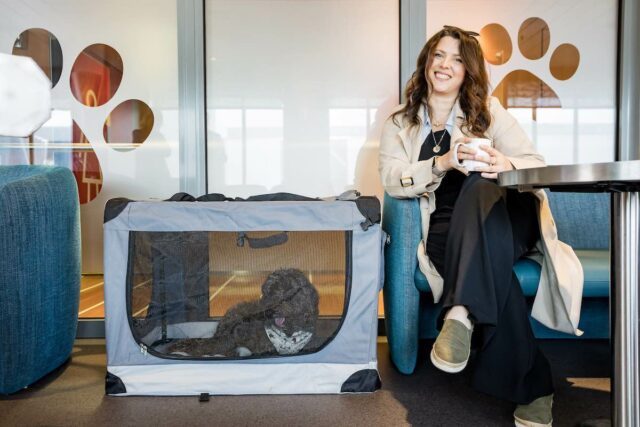
For dogs travelling in the Pet Lounge, you’ll also have access to an outdoor deck area on Deck 7. Dogs need to wear a collar and be on a non-retractable leash no longer than four feet, under the supervision of an adult, in this area. Note that dogs don’t need to be carried to the Pet Lounge in their carrier – they can be walked, also on a short leash.
It’s great that following an outcry following the announcement that Stena Line would no longer allow small pets to travel on their passenger decks in November 2022, that this solution was developed. (Thanks to everyone who helped signed the petition!)
Note that on this short crossing, there are no pet-friendly cabins, unlike were introduced to a number of the other Stena Line crossings to Ireland in early 2023.
What About Larger Dogs?
If you’re travelling with a larger dog, there’s still the option to book them into a kennel, rather than leaving them in your car. (If you are a foot passenger, a kennel booking is required.)
The choice is up to you – wherever your dog would be more comfortable travelling. If you do plan to leave your dog in your car, it’s better to book an early morning or evening ferry during the potentially warmer summer months.
Alternatively, following the announcement in early 2023 that pet-friendly cabins would be available on the other Stena Line crossings from Great Britain to Ireland (Liverpool to Belfast, Holyhead to Dublin and Fishguard to Rosslare), for larger dogs these are probably more pet-friendly.
Other Facilities
The other advantage of travelling on the Cairnryan to Belfast ferries are the excellent facilities onboard the ships. We travelled on the Stena Superfast VII in 2017 and it felt very new at the time – hopefully this is still the case.
All the facilities were of a high standard, with plenty of options available, including multiple lounges and restaurants, plus the option to book a suite, even a spa! The large size of the ship also meant it was a very smooth voyage.
Note though that if you are booked into the Pet Lounge, you can’t leave your pet unattended – something to keep in mind if you are travelling solo.
How to Book
Note that a booking is required for all pets, regardless of how your pet is travelling, whether in a vehicle, kennel or in the Pet Lounge. So don’t forget to add your pet to your booking!
The Next Most Dog-Friendly Ferry Option
If you’d prefer to not travel to and from Cairnryan in Scotland, the next best dog-friendly ferry between Great Britain and Ireland is probably the Stena Lines route between Holyhead and Dublin.
In early 2023, it was announced that pet-friendly cabins would be available on multiple Stena Line crossings on the Irish Sea, including this route (plus Liverpool to Belfast and Fishguard to Rosslare). Additionally, this crossing is relatively quick, just 3hr 15 mins, and particularly handy if you’re travelling from southern Great Britain.
Up to two pets are permitted in each vinyl-floored pet-friendly cabin, with water bottles and pee pads provided. Just don’t forget your pet’s water bowl and bed. There’s also a dedicated outdoor area on the Stena Estrid, where you pup can get some fresh air and have a toilet break, but not on the Stena Adventurer.
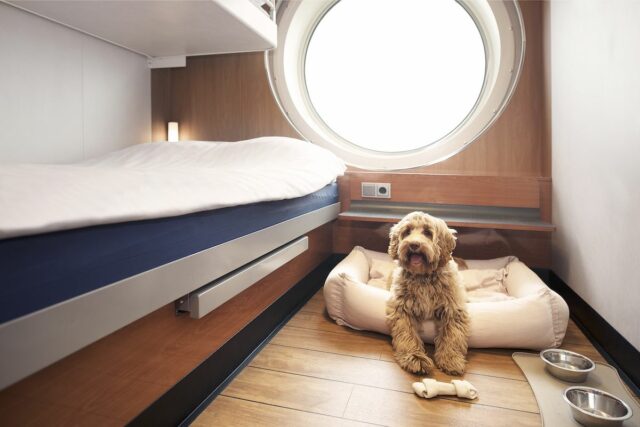
The alternative options are for pets to remain in your vehicle (if travelling by car), or to be booked into a kennel. Both of these options are free of charge, although pets still need to be pre-booked (on the “Stena Plus & Onboard Extras” step of the booking process).
Rules for Taking Your Dog from Great Britain to Ireland
Following the end of the Brexit transition, from 1 January 2021 the rules for pets to travel from Great Britain to both Northern Ireland and Ireland have changed.
Taking Your Dog to Northern Ireland
Prior to Brexit, there was no requirement for a pet passport or anything for your pet to travel from Great Britain to Northern Ireland. However, pets now technically require a microchip, rabies vaccine, worming treatment (for dogs) and pet health certificate.
However, as of September 2021, it was announced that these new requirement are not being enforced , with checks on all pets travelling from Great Britain to Northern Ireland suspended indefinitely.
As of early 2023, the proposed new Windsor Framework will see the paperwork requirements for dogs travelling between Great Britain and Northern Ireland simplified, if the framework is ratified. Under the framework, only a document listing the pet’s microchip number and a declaration that they are not travelling onwards to the Republic of Ireland or other EU countries will be required.
For more information, see my guide on travelling to Northern Ireland with a dog .

Taking Your Dog to Republic of Ireland
If you’re taking one of the ferries from Great Britain to the Republic of Ireland, there are also some changes following the end of the Brexit transition.
As before, your dog will need to be microchipped and vaccinated against rabies. However, a worming treatment is also required for dogs and GB-issued pet passports are no longer recognised. If you don’t have an EU pet passport issued elsewhere, you will have to head to the vet for a pet health certificate.
For more information, see the UK government website .
You May Also Like
- Travelling to Northern Ireland with a Dog
- Visiting Belfast with a Dog
- Travelling to the Republic of Ireland with a Dog
About the Author

Shandos Cleaver is the founder of Travelnuity: Dog-Friendly Travel. She has travelled extensively with her Miniature Dachshund, Schnitzel, including to 33 countries across Europe, every state and territory of Australia except Tasmania, and 10 of the United States. She’s passionate about providing inspiration and information to others wanting to travel with their dogs, whether close to home or internationally.
Inspired? Pin this to your Pinterest board!

34 thoughts on “The Most Dog-Friendly Ferry to All of Ireland”
Hi we are relocating from Belfast to Wales. My dog has been neutered wormed vaccinated and microchipped do I need to get him the rabies injection and a passport. We will be travelling Rosslare to Fishguard thankyou
Lorraine – As you’re travelling through Ireland, you should get your dog a passport and have him vaccinated for rabies, at least 21 days before crossing into Ireland. This is a requirement for crossing country borders within the EU. However, the odds are no-one will check this, certainly not driving into Ireland and probably not even on the ferry crossing. (This is based on my own experience and other reports I’ve read.) However, it could happen, so it’s best to be prepared. Note that the worming treatment usually required to enter the UK or Ireland with your dog isn’t required for travelling between the two countries.
We have travelled to Ireland from the UK and our dog’s passport was checked on every occasion. Don’t take any chances. Ensure the vaccinations are all up to date.
Samantha – Thanks for letting me know! Perhaps they’re becoming stricter on this, compared to the reports I read. I will be adding more details on this, particularly with the changes from Brexit.
Hi, I love your blog, it’s great, thanx for all the information 🙂 I have a question: my partner and I will be travelling from Switzerland to Ireland probably in February with our 9kg dog. She hates kennels and we would like to stay with her as much as possible. Can I remain in the car with her during the ferry crossing from Cairnryan to Belfast or Liverpool to Belfast if needed? Thanks a lot for your answer and Happy New Year!
Thanks and have a great time on your trip! Unfortunately, the ferries that I’ve taken my car on, usually don’t allow human passengers to stay in the car. This happened on our reverse trip from Dublin to Liverpool, plus elsewhere in Europe. I would check with the ferry company directly, to see if they will let you to stay. If not, I would choose the quickest voyage (probably Cairnryan to Belfast) and make your dog comfortable with her bed and familiar belongings.
Hi. We want to travel on the cairnryan to Belfast ferry. Our dog is quite a nervous traveller, and where possible we want to stay with him. After his operation two years ago we bought a doggy stroller, it’s essentially a dog carrier on wheels similar to a child’s pushchair. Can be found on amazon under dog stroller. Please take a look and confirm if your are happy to accept a dog on one of these, I often have walking issues and I can use the carrier to assist me instead of cumbersome crutches. Thank you for your help
Amazon link. https://www.amazon.co.uk/dp/B077W38CHX/ref=cm_sw_em_r_mt_dp_U_2fhzCb284AHP5 Regards
Sarah – Stena Line stipulates that dogs inside the cabin must be in a pet carrier that is a maximum of 80cm x 52cm x 52cm, that needs to be secured by a secure door/zip/lock mechanism and your pet is to be totally enclosed. So unfortunately the pushchair alone wouldn’t qualify, unless you have a carrier case that sits in the push chair. If you require further information, I recommend sending a message to Stena Line directly, such as through their Facebook page: https://www.facebook.com/StenaLineUKIE
Hi did you look at the amazon link?
Sorry – I just realised I only looked at the main photo showing the dog sitting up, without being enclosed. I didn’t realise that the top also zipped shut. I’m not sure if it will be okay, due to the maximum size specified. I would check directly with Stena Line.
Thank you so much for this post! We’ve been wanting to travel to Ireland for a while but, thinking our only option would be leaving our pugs in the car or on board kennels, we haven’t. We’re now looking at travelling with Stena later in the year!
That’s great to hear, it’s a wonderful option.
This site has been so helpful. I am relocating to the UK from the US and need to take my 2 small dogs as carry on. Ireland allows dogs to be with the passenger as carryon, how easy it to get from Ireland to Paris on the ferry as long as you have your vaccination papers and etc? I’ve been doing so much research and stumbled on your site, any tips, insights are greatly appreciated!!!!
There’s direct ferries from Ireland to northern France, and then you can take a train onward to Paris. I’ve written about these ferries in this post: http://www.travelnuity.com/taking-a-dog-to-ireland/ . Plus I’ve covered the rules for dogs on trains in France here: http://www.travelnuity.com/dog-friendly-france/
When heading to France, it’s unlikely your paperwork for your dogs will be checked, based on my experience. (The reverse is the case when returning to Ireland or the UK – including checking the worming was done.) Your EU health certificate you use to travel to enter the EU is valid for 4 months, so you could just rely on that. (Although sometimes the local staff aren’t familiar with it, mainly when checking in for flights.)
I recommend getting an EU pet passport for both your pets. Take along your EU health certificate to the vet and have them transfer the details. Sometimes they will copy across the rabies vaccination, otherwise they might require a new rabies vaccine. To travel around the EU then you just need the pet passport, with a valid rabies vaccine at least 21 days beforehand.
Stena services to Ireland are not dog friendly. If you find it acceptable to leave your dog I your car for two hours minimum something which on land would get you prosecuted and fined then you can take your dog. The exception is Liverpool Belfast where you can leave them in a cage and get access to them during the voyage but this us also the longest crossing. For truly dog friendly Ferries go to the Scottish Islands with Calmac where they have a separate “doggy class” on the passenger deck which is a passenger lounge where dogs are allowed on leads. And having travelled with them many times I have never seen any problems with the canine passengers on deck. Hopefully other Ferry companies will follow suit. I am sure there is a strong business case for them to do so to attract back passengers like myself who won’t use them till they do
It would be great if the ferries would allow more dogs on board, I’ve experienced this elsewhere in Europe. With this particular ferry I was specifically referring to the arrangement where smaller dogs in a carrier are allowed to be carried on board, which is what I was able to do with my dog.
Hey, i am looking to travel from Ireland to the UK around september 2021 all going well depending on the on going situation, im just looking around as i have a rather large dog (bernese mountain dog) i can’t seem to find any pet free cabins, i wouldnt feel comfortable leaving him in the car as he is very sensitive to heat due to his fur. I am just wondering is there any cabins from Ireland to the UK that are pet friendly? Thanks 🙂
Laura – Unfortunately, there’s no pet-friendly cabins on ferries between Ireland and Great Britain. Most of the ferries have kennels (also called the “Dog Lodge” on some ferries), but double check the size of these as you have quite a large dog. If you end up needing to leave him in your car, I recommend choosing one of the shorter ferries (the P&O ferry from Larne to Cairnryan is the quickest at 2hr) and booking either an early morning or evening trip, plus ensuring he has access to water.
Hi, this information is all so helpful. We are hoping to take our basset hound and corgi on the Stena Line Rosslare to Cherbourg route and the return trip as well. We booked the “dog lodges” for the crossing as it’s a long trip and there’s no way they could stay in the car that long. Do you know if you have unlimited access to let your dogs out on that route to check on them? I’ve read some really negative reviews on Trip Advisor of the dog lodges on Stena Line and I’m starting to get concerned that it’s not a safe journey. What do you think? If it’s not safe, we will instead get a house sitter and leave the dogs at home for the five weeks that we’re gone. 🙁
Sarah – I haven’t travelled before on this exact route, instead I’ve travelled on the overnight Harwich to Hook of Holland Stena Line crossing with my dog, which is slightly shorter. On that ferry you could visit your dogs as much as you wanted, but I found it was best to leave the dogs alone, so they didn’t all start barking. (There were two kennel rooms, so dogs were with about a dozen other dogs.) With that one there was a CCTV channel to watch the kennels on, but I can’t see any mention of that for this ship. I recommend emailing Stena Line to confirm the details for this crossing. I’m pretty sure it’ll be safe, but it sometimes depends on the individual dog and whether they are fine being left in a kennel situation, similar to if they are staying at a vet after an operation. You know your own dogs best, what they are okay with.
thanks!! really helpful. not sure if my dogs would be great in that situation so I will weigh the pros and cons because I also know they don’t want to be left behind for five weeks. 🙂
Hi Sarah, I booked a dog lodge for my 3 dogs on the 8 hour Liverpool to Belfast crossing a couple of years ago, we ended up leaving all 3 in the campervan on the way out, as when I looked at the ‘dog lodges’ which were essentially stacked up crate size kennels in one room, I decided I wasnt happy to leave them in them, but one of them didnt cope very well, so I took him down to the dog lodge and sat on deck beside the lodges on a bench for the whole crossing, so yes you can visit them as much as you like during the crossing (provided it’s the same set up). I’m just hoping I can sit with him on deck for the shorter 2 hour crossing we have just booked too. 🙂
Hi Great blog. Do you know if dogs need to be in crates if they remain in the car? My dog is perfectly happy sitting in the boot but I know the kennel and cage will freak her out as she’s nervous. Many thanks.
Thanks Rose! I don’t think this is a requirement, I haven’t heard of it.
Hello there. Thanks for weeding out all the info on the tricky issue of post-Brexit travel, but I am still a little bewildered. We are planning to take our dogs to the tip of Ireland (Co. Donegal) for a week but via the Cairnryan to Larne ferry, thereby entering in Northern Ireland then travelling on across the border. Is this alright if we have the relevant paperwork to enter NI, or do we actually have to change our plans and travel much further in order to enter Ireland directly at an approved entry port. So confused, even after checking the government website. What is your understanding please? Many thanks 🙂
My understanding is you need the extra paperwork to enter NI, but then there’s no issues crossing to Ireland, it’s the same as it was pre-Brexit. Additionally, I’ve come across reports the extra requirements for NI are still not being enforced, with all the complications of Covid, although it’s always best to be prepared.
Hi just to let you know Stena line has banned any dogs onboard the Passenger decks as of 1st Nov. Not good for my mini dachshund who has separation anxiety. Please sign the petition as a fellow traveller. This ruling is stopping me seeing all my family in N Ireland as I can’t leave my dog in the car or the kennels on his own. https://www.change.org/p/stena-line-provide-pet-friendly-cabins-on-your-irish-sea-routes?utm_content=cl_sharecopy_34028580_en-GB%3A6&recruited_by_id=f683bbd0-3a70-11ed-b5bf-07d03d12bd4e&utm_source=share_petition&utm_medium=copylink&utm_campaign=psf_combo_share_initial&share_bandit_exp=initial-34028580-en-GB
I just heard this yesterday – such terrible news! I will sign the petition and monitor the situation – fingers crossed it’s reversed.
None of these options are truly dog ‘friendly’ – there is no way I would leave by dog alone in a car whilst she suffers the motion of the ship; the kennel option is almost as bad. As for the pet carrier, they are borderline cruel. There is no reason why one deck can’t be made dog friendly, as on the Isle Of Man ferry from Heysham. Come on ferry companies, stop treating dog owners like lepers
There are plenty of dogs, such as my own, who are quite happy to travel in a pet carrier. But all dogs are different.
I live in Northern Ireland and am travelling via rosslare Fishguard in July 23 with my 2 dogs. I have booked the pet cabin. Do they still need pet passport and rabies injection? I heard it was needed one way but not the other – and have held off on the injection in case rules changed But I’m not sure?
My understanding is that there are no checks going from Northern Ireland directly to Great Britain (e.g. the ferry to Cairnryan), plus the checks going into Northern Ireland are on hold indefinitely. However, this ferry route is between the Republic of Ireland and Great Britain, so I believe checks would apply in both directions. I’m not sure if they always occur, though.
Hi, read your comment on P&O and I guess they don’t have a ship for dogs on that side of the pond. So I thought I should pipe up about P&O , Dover to Cali Dogs Lounge, with free poo bags, treats, (dog and human), coffee, tea, and soft drinks etc. This also includes an outdoor doggy deck where mommy can smoke as well. (yuk) It’s a dog’s life on the Dover to Cal Run!
Thanks for your comment! Yes, I’ve covered the Dog Lounge on my posts about ferries across the channel. It’s just a pity that it’s not accessible to foot passengers without vehicles!
Leave a Comment Cancel reply
Save my name, email, and website in this browser for the next time I comment.
Cookies on citizensinformation.ie
We use cookies to collect information about how you use citizensinformation.ie. This helps us to improve your experience. You can find out more about the cookies we use in our Cookie notice . You can also read our Privacy policy . You can accept all cookies or you can chose which cookies to accept or reject. You can change your cookie preferences at any time by using the My cookie preferences link at the bottom of each page.
Cookie preferences
Cookies used by google analytics.
We use Google Analytics to measure how you use the website so we can improve it. We have configured Google Analytics to anonymise your IP address so that you are not personally identified. We gather information on:
- How you got to the site
- The pages you visit on citizensinformation.ie, and how long you spend on each page
- What you click while you are visiting the site

Is your dog a restricted breed?
10 June 2024

Do you own a dog? 🐕
If your dog is a restricted breed (or a strain or cross of one), they must be:
🐾 Kept on a short strong lead (under 2 metres)
🐾 With someone over the age of 16, who is able to control them
🐾 Muzzled when in a public place
🐾 Wearing a collar with the name and address of their owner, at all times
To find out more about these breeds, see 👉 Restricted breeds of dog in Ireland
Filter by tag
- Site updates
- Did you know?
- February 2024
- January 2024
- December 2023
- November 2023
- October 2023
- September 2023
- August 2023
Manage cookie preferences
Travel News

Apr 25, 2024 • 5 min read
In an effort to regulate the number of tourists within the city, Venice is introducing a new booking system for visitors.

Apr 24, 2024 • 5 min read
Thailand is now in the weed game but it's not all green: an expert's guide to the new cannabis rules.

Apr 19, 2024 • 4 min read
A new walkway will make it easier to navigate Rome's ancient sites. But what does it mean for the locals?

Apr 3, 2024 • 6 min read
JetBlue has launched a new route from New York City to Dublin, and we were lucky enough to try it out.

Mar 27, 2024 • 5 min read
Japan is set to limit visitors at some popular attractions so that sites don't suffer from overtourism. Here's what you need to know.

Mar 26, 2024 • 3 min read
The Antoni Gaudí-designed church has been under construction for more than a century

Mar 25, 2024 • 2 min read
To combat overtourism and promote sustainability, authorities on the Galápagos Islands are raising fees this summer for most visitors from US$100 to $200.

Mar 22, 2024 • 5 min read
Late-night dining has recently been criticized by a government minister in Spain. So could things be about to change?

Mar 13, 2024 • 3 min read
Weather conditions this year may be just right to bring wildflower super blooms to life in parts of California.

Mar 5, 2024 • 3 min read
Irish people are famously very friendly and easygoing, yet certain behaviors are sure to rankle.

Feb 29, 2024 • 2 min read
Passengers can travel from Brussels to Prague (and even link up with London) on a cross-border night train service.

Feb 28, 2024 • 3 min read
Plaza de España is one of the most-visited attractions in Spain.

Feb 21, 2024 • 2 min read
Hawaii’s governor, Josh Green, proposed a $25 climate fee on tourists joining other nations struggling with the heavy burden of over-tourism.

Feb 16, 2024 • 4 min read
Digital nomads rejoice! Japan's new six-month visa means you could soon be working from Tokyo. Our Japan expert John Walton has the latest details.

Feb 15, 2024 • 4 min read
The beloved bouquinistes of the Seine quays have been selling books for over 450 years.

Feb 13, 2024 • 4 min read
Bali is introducing a new tourist tax starting February 14.

Feb 2, 2024 • 5 min read
The Hagia Sophia in İstanbul has reopened its upper gallery for the first time since 2020 – but with new rules and a fee.

Jan 31, 2024 • 6 min read
Always dreamed of seeing the aurora borealis? Here’s our guide on how and where to see the northern lights.

Jan 24, 2024 • 2 min read
The Japan Meteorological Corporation has released its latest predictions for when blooms will start to appear around Japan.

Jan 15, 2024 • 3 min read
Beside the imposing Colosseum, a new archaeological park and museum have recently unveiled their treasures to eager visitors.

Jan 11, 2024 • 4 min read
Lonely Planet’s resident aviation journalist John Walton on why they're grounded, what happens next, and what it might mean for your flight.

Jan 9, 2024 • 6 min read
If you’re planning on renting or buying a van or motorhome to travel through New Zealand, here’s how the new legislation may affect your travel plans.
Press Herald
Account Subscription: ACTIVE
Questions about your account? Our customer service team can be reached at [email protected] during business hours at (207) 791-6000 .
- Local & State
Resurgam festival, a massive yard sale and more things to do this weekend
Comedian Dave Attell is in town, Zephyr Ice is serving up cool treats and food trucks are out in force (there's an app that will tell you where).

You are able to gift 5 more articles this month.
Anyone can access the link you share with no account required. Learn more .
With a Press Herald subscription, you can gift 5 articles each month.
It looks like you do not have any active subscriptions. To get one, go to the subscriptions page .
Loading....
We’re not entirely sure how the weekend weather is going to shake out, but either way there’s a whole lot going on, so let’s get to it.

Maine Roller Derby skaters competing at Happy Wheels Skate Center in Westbrook. Photo by Jim Vernier
On Saturday and Sunday, Maine Roller Derby’s first international tournament happens at Happy Wheels Skate Center in Westbrook. There will be several exciting flat-track bouts, and if you’re a Mainer, tickets are half off.
Get a discount on tickets to Maine Roller Derby’s international tournament

Max Abraham runs through Moon Tide Park while performing with the band Corpus Chicanery at last year’s Resurgam festival. Shawn Patrick Ouellette/Staff Photographer
The Resurgam Music and Arts Festival is Sunday from 11:30 a.m. to 7 p.m. at Ocean Gateway marine terminal and surrounding areas. The list of performers is about 17 miles long and includes Oshima Brothers Band and professional hula hoop and circus artist Nettie Loops.
Resurgam festival returns this weekend with music, arts and more

Local musician Toby McAllister, pictured here at The Press Room in Portsmouth, would of course play at a local venue on his perfect day. Photo by Corey Fitzgerald and courtesy of Toby McAllister
Another musician you can see at Resurgam is Toby McAllister from Sparks The Rescue. McAllister unpacked his perfect Maine day for us, and it includes a hike in Grafton Notch and a stop at Puzzle Mountain Bakery in Newry for cookies.
My Perfect Day: Hiking Old Speck, eating tacos and sweets, playing a show – for musician Toby McAllister, it all strikes a chord

Comic Dave Attell plays the State Theatre in Portland, June 8. Photo courtesy of the State Theatre
There’s plenty else cooking this weekend , including Yoga in the Park on Saturday and the Walk the Working Waterfront tour. Both are in Portland. Or you can shop till you drop at Maine’s Ultimate Spring Yard Sale Saturday at Cumberland Fairgrounds. Need a few laughs? Grab a ticket to see comic Dave Attell at the State Theatre Saturday.
Waterfront tour, giant yard sale, comic Dave Attell

Zephyr proudly tells its customers that everything is made in house with real fruit and no dyes. Photo by Megan Gray
Satisfy your sweet tooth with something a little different this weekend. Zephyr Ice in Portland serves shaved ice atop a scoop of regular or vegan ice cream. Choose from a variety of syrup flavors, all made in-house with real fruit.
For cool, customizable treats, breeze on in to Zephyr Ice

Mainely Burgers food truck. Shawn Patrick Ouellette/Staff Photographer
Should you fancy a food truck fix, check out our massive, always growing food truck guide and get busy chowing down.
A guide to 87 food trucks rolling through Maine

A Foodtruckalico Instagram post featuring the Ugly Dumpling food truck. Photo by Justin Velgos
For even more food truck fodder, we suggest heading to Food Truckalico on Instagram . A couple of times a week, the account shares details about where and when you can find trucks in the Portland area.
Follow the food trucks with Food Truckalico on Instagram

A newspaper article about a Comegato sighting from web series “Tracking the Comegato.” Photo courtesy of Kate Kaminski
If the weather does indeed relegate you to the indoors, curl up on the couch and fire up the new web series “Tracking the Comegato” about a beastly human-weasel hybrid that may or may not exist.
Could this human-weasel hybrid from Maine join the ranks of Bigfoot?
Success. Please wait for the page to reload. If the page does not reload within 5 seconds, please refresh the page.
Enter your email and password to access comments.
Forgot Password?
Don't have a commenting profile? Create one.
Hi, to comment on stories you must create a commenting profile . This profile is in addition to your subscription and website login. Already have a commenting profile? Login .
Invalid username/password.
Please check your email to confirm and complete your registration.
Create a commenting profile by providing an email address, password and display name. You will receive an email to complete the registration. Please note the display name will appear on screen when you participate.
Already registered? Log in to join the discussion.
Only subscribers are eligible to post comments. Please subscribe or login first for digital access. Here’s why .
Use the form below to reset your password. When you've submitted your account email, we will send an email with a reset code.
Send questions/comments to the editors.
Member Log In
Please enter your username and password below. Already a subscriber but don't have one? Click here .
Not a subscriber? Click here to see your options
Israel-Hamas war latest: UN approves Biden's ceasefire proposal - as Hamas welcomes decision
The UN Security Council has approved Joe Biden's proposal for a full and immediate ceasefire. US state secretary Antony Blinken has been back in the Middle East today on his eighth visit since the war between Israel and Hamas broke out.
Monday 10 June 2024 22:58, UK
- Israel-Hamas war

- UN votes to approve Biden's ceasefire proposal
- Vote sends 'clear message' to Hamas - US
- Hamas welcomes UN support for ceasefire
- US considering negotiating deal with Hamas to free American hostages
- Details of Blinken-Netanyahu meeting released
- 'The streets are filled with dead bodies': Eyewitnesses describe Israeli hostages raid
- Analysis: Hostages rescue will be cathartic for Israelis - but Netanyahu is under pressure and infuriating the US
That brings an end to our live coverage for this evening.
Scroll back through the blog to catch up on the day's events.
The Israeli Police has released footage it says shows part of a mission to rescue hostages in Gaza at the weekend.
The bodycam footage appears to show the moment police tore into an apartment and discovered three of the four hostages who were returned on Saturday.
Police speak to the hostages in Hebrew, asking for their names and telling them "everything is ok, we are here to rescue you, stay calm," as they continue shooting.
The Hamas-run health ministry claims at least 274 Palestinians were killed in the area of the operation.
Antony Blinken has met Israeli defence minister Yoav Gallant in Israel as part of his latest diplomatic visit to the region.
State Department spokesperson Matthew Miller said the pair discussed the ceasefire proposal which includes clauses for a hostage deal and a surge of humanitarian aid into Gaza.
Mr Blinken "commended Israel’s readiness to conclude a deal and affirmed that the onus is on Hamas to accept," Mr Miller said.
The US secretary of state also reaffirmed his country's "ironclad commitment to Israel's security," he said.
The Palestinian health ministry claims four Palestinians have been killed tonight by Israeli forces in Ramallah, in the West Bank.
Providing its account of the operation, Israel's border police said officers arrived at a building in the area to arrest suspects from an attempted attack earlier today. As they closed in, four suspects tried to escape in a vehicle by running over security officers, so police opened fire and killed them, it said.
The latest Israeli operation comes after an early-morning raid in the region's al Faraa refugee camp, which Israel says led to one militant being killed and two others wounded.
According to the health ministry, a 15-year-old Palestinian boy was killed by Israeli forces during that raid.
UN Security Council ambassadors are still discussing the latest resolution after it passed with 14 votes in favour.
Russia was the only country to abstain and there were no votes against.
Vasily Nebenzia, who represents Russia on the council, says his country has a "whole host of questions" about the US draft ceasefire deal and adds that the "ultimate outlines" of the proposal are "not known to anyone except, perhaps, the mediators".
Mr Nebenzia says council members were asked "against the clock" to sign up to the resolution.
"Hamas is called upon to accept this so-called deal, but still there is no clarity regarding official agreement from Israel for the deal proposed by President Biden," he says.
He says the Security Council should not sign up to "agreements with vague parameters" - however he says Russia was not looking to "block" it as it was appeared to be "supported by the Arab world".
A spokesman for the Palestinian presidency has joined Hamas in welcoming the resolution adoption by the Security Council.
Nabil Abu Rudeineh said the presidency backed any resolution that calls for an immediate ceasefire in Gaza and preserves Palestinian land unity.
The UN Security Council resolution effectively endorses what Joe Biden laid out 10 days ago - but it doesn't mean a lot in the immediate term, says our Middle East correspondent Alistair Bunkall .
Hamas is not party to the resolution and has to officially agree to the terms and conditions, which it hasn't yet done, he says.
"Until they do then no ceasefire can come into force and there will be no hostage deal," Bunkall adds.
"However, this just underwrites the will of the international community to push ahead with it."
Bunkall says he finds interesting a clause in the resolution which rejects any attempt and demographic or territorial change in Gaza.
"That is the UN putting on record in the form of a resolution that the territory of the Gaza Strip cannot change and I think that is a rebuttal of any attempts that the Israelis might want to create a buffer zone," he says.
Hamas has welcomed the UN Security Council's decision to back the ceasefire deal set out by President Biden.
The militant group said it was ready to cooperate with mediators over implementing the plan's principles.
In a statement, it said: "Hamas welcomes what is included in the Security Council resolution that affirmed the permanent ceasefire in Gaza, the complete withdrawal, the prisoners' exchange, the reconstruction, the return of the displaced to their areas of residence, the rejection of any demographic change or reduction in the area of the Gaza Strip, and the delivery of needed aid to our people in the Strip."
UK ambassador Barbara Woodward says the resolution is an "important step" towards bringing an end to the conflict.
"The situation in Gaza is catastrophic and the suffering has gone on for far too long," she says, adding that the deal tabled is "something that the UK has long called for".
She called on all parties involved "to seize this opportunity and move towards lasting peace which guarantees lasting security and stability for both the Israeli and Palestinian people".
"Now is the time for diplomacy. Now is the time for peace," she says.
Speaking after the vote, US ambassador Linda Thomas-Greenfield says the council has sent a "clear message" to Hamas: "Accept the ceasefire deal on the table."
"Israel has already agreed to this deal and the fighting could stop today if Hamas would do the same," she adds.
She says the international community is now "united behind a deal that will save lives and help Palestinian civilians in Gaza start to build and heal".
Ms Thomas-Greenfield says Egypt and Qatar have assured Washington they are working to ensure Hamas engages with ceasefire discussions, and that the US would ensure Israel "lives up to its obligations as well".
Be the first to get Breaking News
Install the Sky News app for free


COMMENTS
If you are bringing a pet to Ireland from the USA, you need to comply with certain requirements including proof of rabies vaccine connected to your pet's microchip. Additionally for Ireland & UK (but not all EU countries), a required tapeworm treatment. If you are traveling to the EU for the first time or on holiday, you will also need a USDA ...
Cats, dogs and ferrets must comply with the rules for pet travel as outlined in sections above. Pets from non-EU countries must enter through a designated Travellers Point of Entry (TPOE) after providing advance notice and undergo a compliance check on arrival. TPOEs are: Dublin Port. Dublin Airport.
Dogs, cats and ferrets from certain countries or territories can enter Northern Ireland without quarantine provided they meet certain criteria. Travelling from the EU. Northern Ireland is part of the EU Pet Travel Scheme so you can use a pet passport issued in an EU country, including the Republic of Ireland, to bring your pet into Northern ...
If you are bringing a dog into Ireland from a non-EU country, it must be treated for tapeworm (Echinococcus multilocularis) each time you travel to Ireland. The treatment must be given by a vet between 1 and 5 days before you come to arrive in Ireland, and recorded in the pet passport or EU health certificate. Step 6 - Advance notice
September 11, 2023. Taking dogs to Ireland is pretty straightforward. Firstly, you need to ensure you have to correct documentation for an Ireland Pet Passport, or EU Pet Passport. Dogs are eligible for an EU Pet Passport which allows them to travel freely within the EU. Secondly, you will need to organise travel.
[email protected] (353) 1-8401776. If you are planning to travel to a non-EU country with your pet on a short trip or holiday, please select your pet species type and the country you plan on visiting in the tab above, and read the conditions of re-entering Ireland with your pet as vaccination protocols may require up to 3 months wait ...
Irish Ferries pet policy. P&O Ferries pet policy. If you are planning on flying with your dog to Ireland, you'll need to book with a pet friendly airline such as KLM, Lufthansa, or Aer Lingus. You'll need to check with the airline what their pet policy is, and whether your pet can travel in the cabin or whether they have to be in the hold.
Delta Air Lines. Dogs are allowed in the cabin for flights into Ireland from the USA. At the time of publishing, Delta has an embargo on all household pets in the luggage hold on flights to/from Ireland without an end date set for the embargo. Pets in Cabin Additional Information. Pets per passenger - 2.
For travel to the EU and Northern Ireland, from 1 January 2021 onwards, people travelling with their pets and assistance dogs will need to follow new requirements. Importantly, a current EU pet passport issued in Britain will not be valid for travel to the EU or NI, but an animal health certificate (AHC) will be required. Allow at least 1 month ...
Bringing your pet dog, cat or ferret into Ireland from another EU country or certain listed countries, including Northern Ireland. The pet must arrive in Ireland with their owner.If the owner cannot travel with the pet directly, then someone else (an authorised person) may travel with the pet directly on the owner's behalf, BUT only if the owner's own journey is within 5 days of the pet ...
Travelling with more than 5 pets. You cannot take more than 5 pets to an EU country or Northern Ireland unless you're attending or training for a: competition. show. sporting event. You'll ...
When making an online booking, specify the number of pets, along with adults and children. Make sure you select a pet-friendly cabin, then on the next step ("3. Pets"), select the number of dogs or other pets you have in the cabin. There is a charge of €30 per dog or pet in each direction, or €60 return.
Requirements to Travel to Ireland with a Dog. Before flying to the Republic of Ireland with your dog, make sure you tick off all the requirements for dogs to be transported to the country. At a minimum, pet dogs require a microchip, an up-to-date rabies vaccine done at least 21 days ago, and an EU pet passport or EU pet health certificate.
dogs must have had all normal 'puppy' vaccinations. rabies vaccination (given at least 21 days before travel) your dog/s must have a registered microchip. tapeworm treatment given by an approved vat 1-5 days before travel. TOP TIP: If you co-own your dog, make sure you have both of your details on the microchip.
Complete the following entry requirements to travel to Ireland with your pet: Pets being transported into Ireland must be microchipped. Vaccinations against rabies and tapeworm are also required. Rabies vaccinations must be administered after the microchip is inserted. Pets must be 12 weeks old when vaccinated and wait the appropriate time for ...
Dog-Friendly Sightseeing in Ireland. When travelling in Ireland with your dog, I highly recommend including these dog-friendly activities in your itinerary. They're also some of the most scenic attractions for humans, too! 1. Visit the Cliffs of Moher. Don't miss visiting the Cliffs of Moher while in Ireland.
7. If you are moving a dog to Ireland from any country besides Finland, Malta, Northern Ireland or Norway, a veterinarian must treat your dog for tapeworm. The treatment will need to be recorded in the dog's pet passport or EU health certificate each time you travel to Ireland. The treatment MUST: Contain praziquantel.
September 4, 2023. Whether you are planning on visiting Ireland for a holiday, or are relocating there, you don't have to leave your pets behind! Taking pets to Ireland is pretty straightforward. Firstly, you need to ensure you have to correct documentation for an Ireland Pet Passport, or EU Pet Passport. Dogs, cats and ferrets are eligible ...
TAPEWORM - To re-enter Ireland, your dog must have tapeworm treatment administered whilst abroad. The treatment must be done more than 24 but less than 120 hours before scheduled arrival time in Ireland and must be entered correctly on the pet passport/AHC. See our list of vets near our ports for vets we recommend
Brexit: Pets travelling FROM Northern Ireland: After 31st December 2020, you will still be able to travel with your pet (dog, cat or ferret) to France and from Northern Ireland. Pets with Ireland and Northern Ireland issued pet passports will continue to use the existing pet passport scheme and EU pet travel rules.
Find out if your pet qualifies to travel. Your animal doesn't qualify for pet travel and is subject to different import regulations and export regulations if you: Don't see your pet listed below. Are exporting semen or embryos from any animal. Have a pet that's considered livestock or poultry, like pigs or chickens.
Dogs that are properly used in the search and rescue of a missing person. Join the Irish Mirror's breaking news service on WhatsApp. Click this link to receive breaking news and the latest ...
On most but not all routes dogs are permitted. At the moment, there are three dog-friendly ferry options available for travelling from Great Britain to Northern Ireland. You've got the choice between the Stena Line Ferry from Cairnryan (in Scotland) to Belfast, the P&O Ferry from Cairnryan to Larne, and the Stena Line Ferry from Liverpool to ...
Do you own a dog? 🐕. If your dog is a restricted breed (or a strain or cross of one), they must be: 🐾 Kept on a short strong lead (under 2 metres) 🐾 With someone over the age of 16, who is able to control them. 🐾 Muzzled when in a public place. 🐾 Wearing a collar with the name and address of their owner, at all times
Discover amazing travel experiences with Lonely Planet's insider tips, inspirational traveler stories and expert guidance from around the world. ... "Hands off Molly Malone" and other tips for visitors to Ireland. Mar 5, 2024 • 3 min read. Irish people are famously very friendly and easygoing, yet certain behaviors are sure to rankle. train ...
Comedian Dave Attell is in town, Zephyr Ice is serving up cool treats and food trucks are out in force (there's an app that will tell you where).
The UN Security Council has approved Joe Biden's proposal for a full and immediate ceasefire. US state secretary Antony Blinken has been back in the Middle East today on his eighth visit since the ...